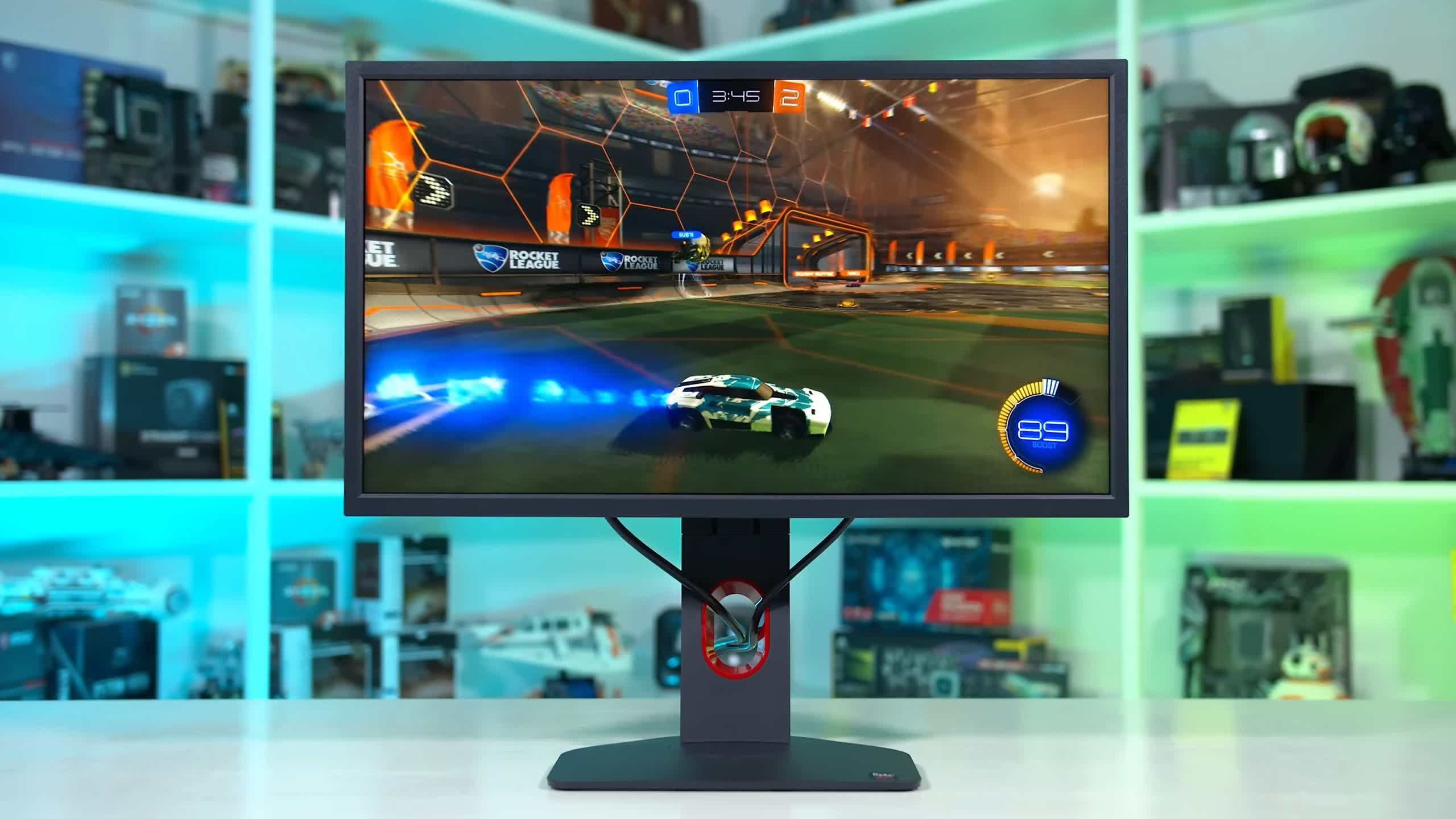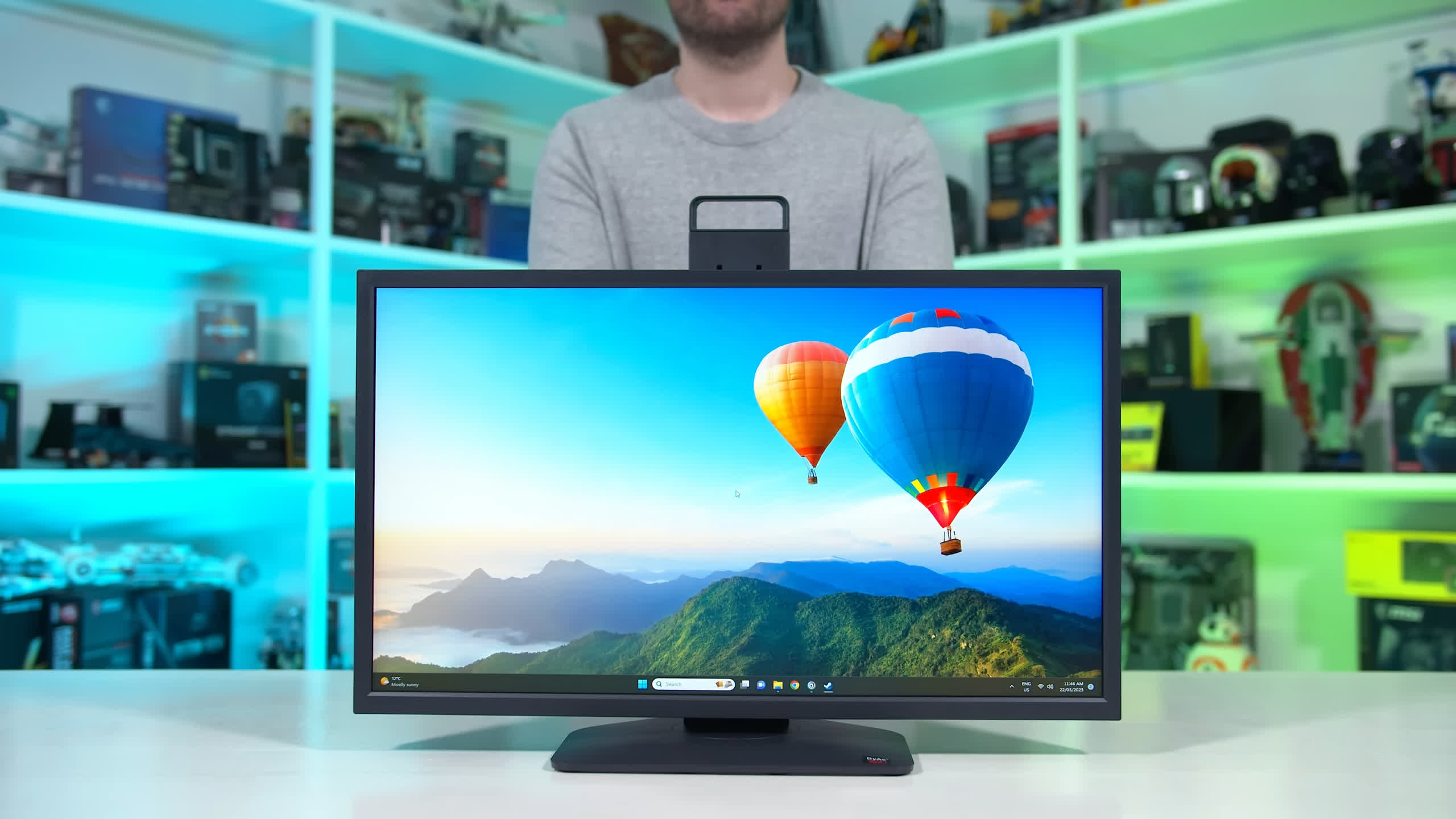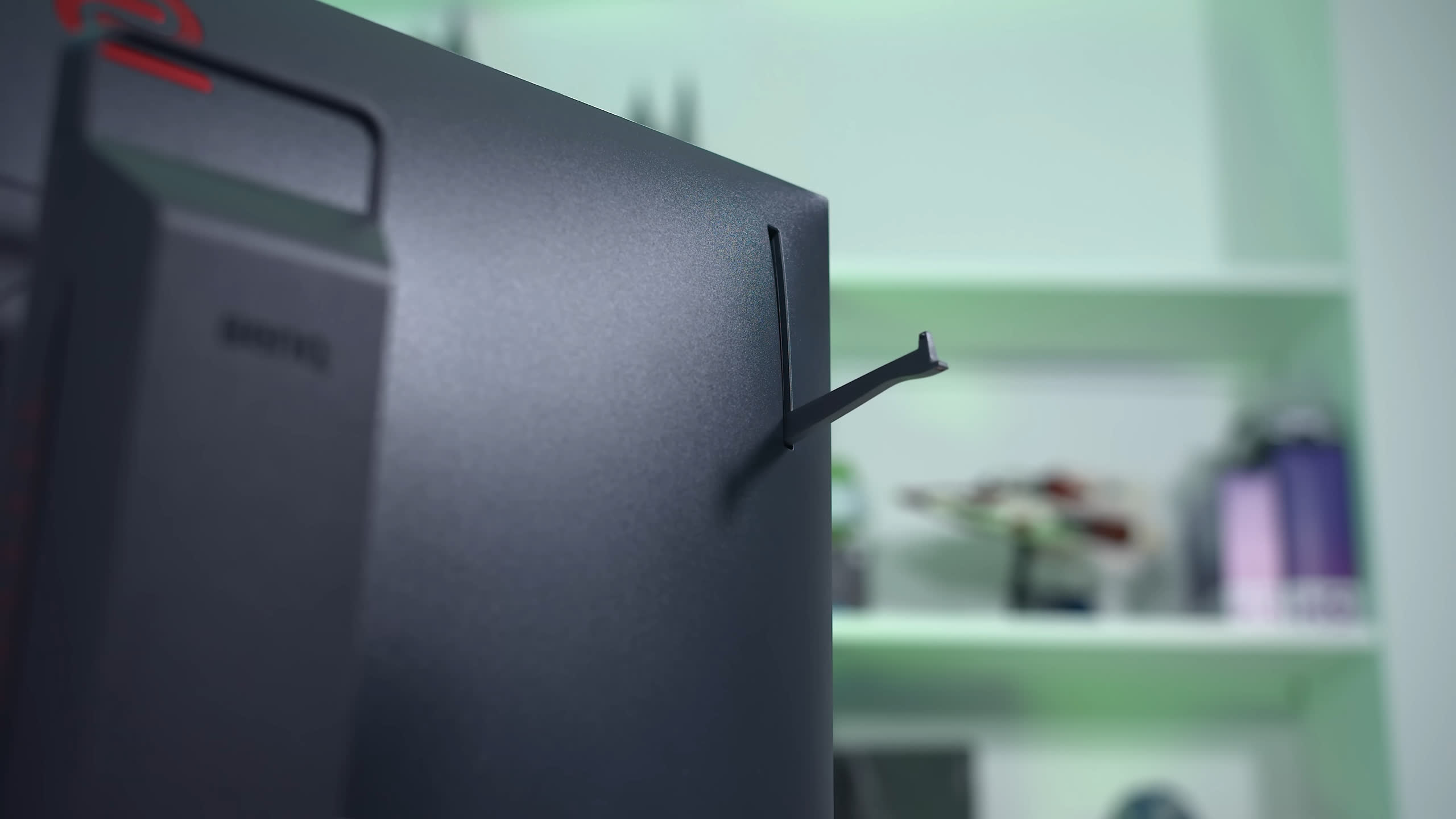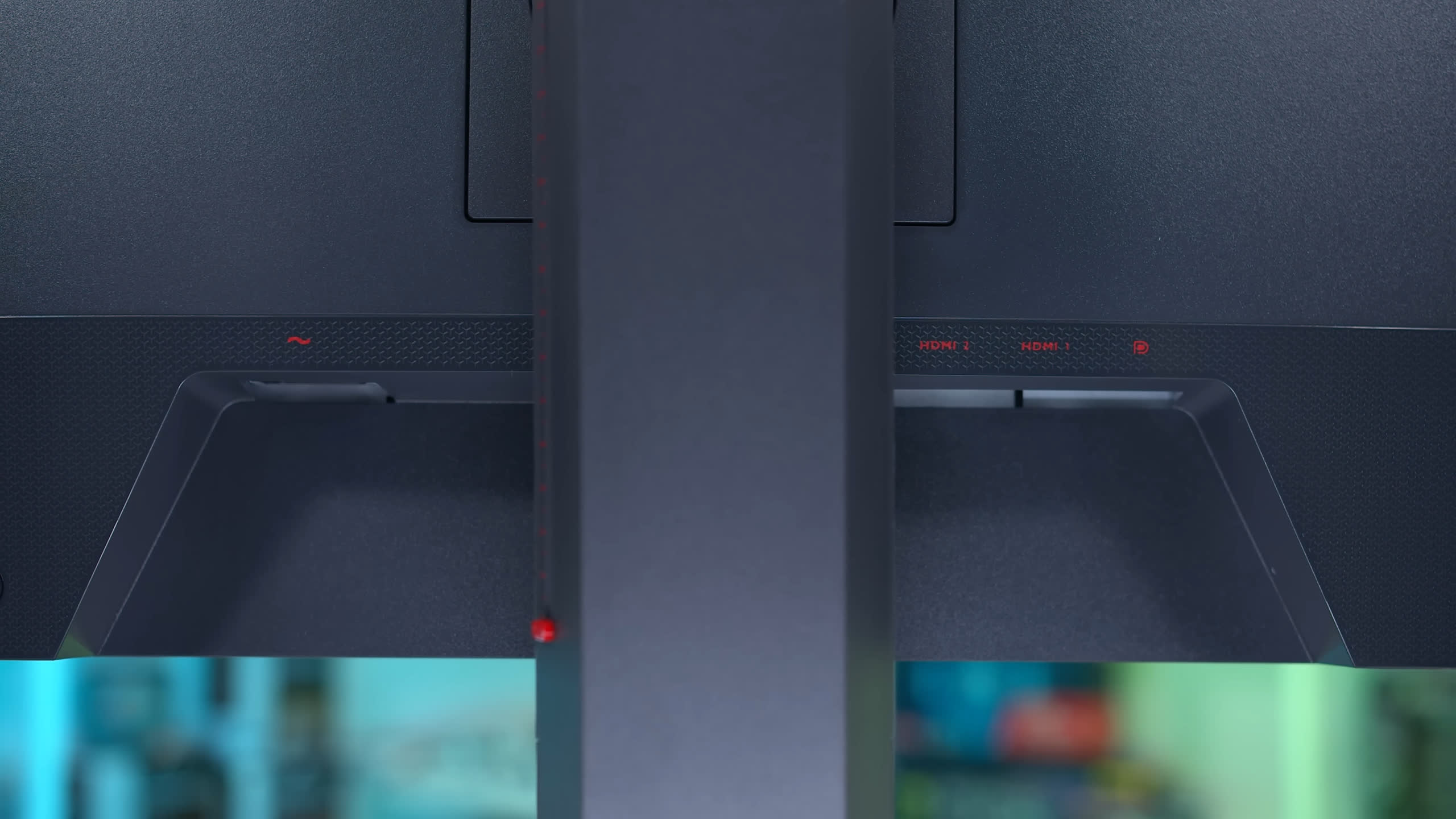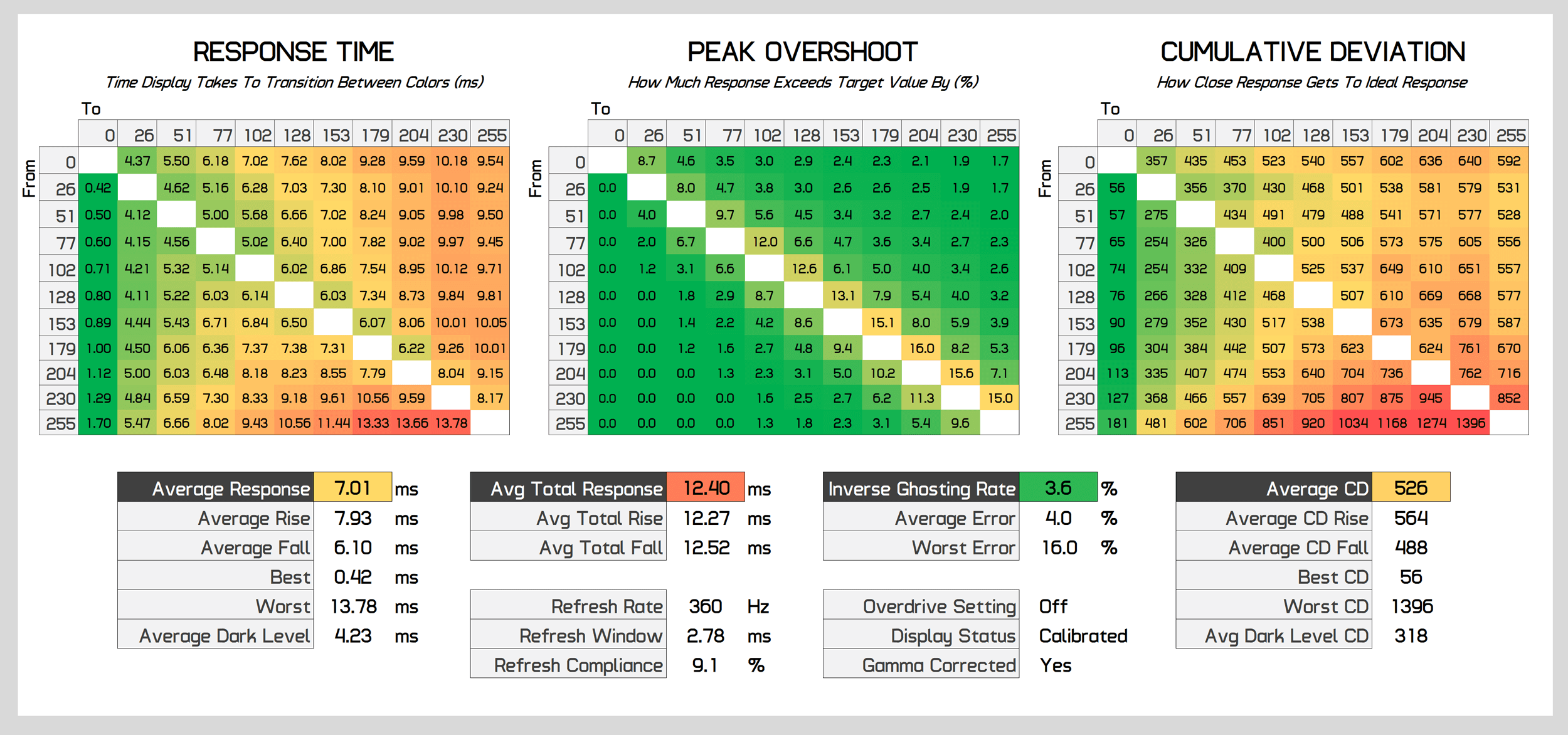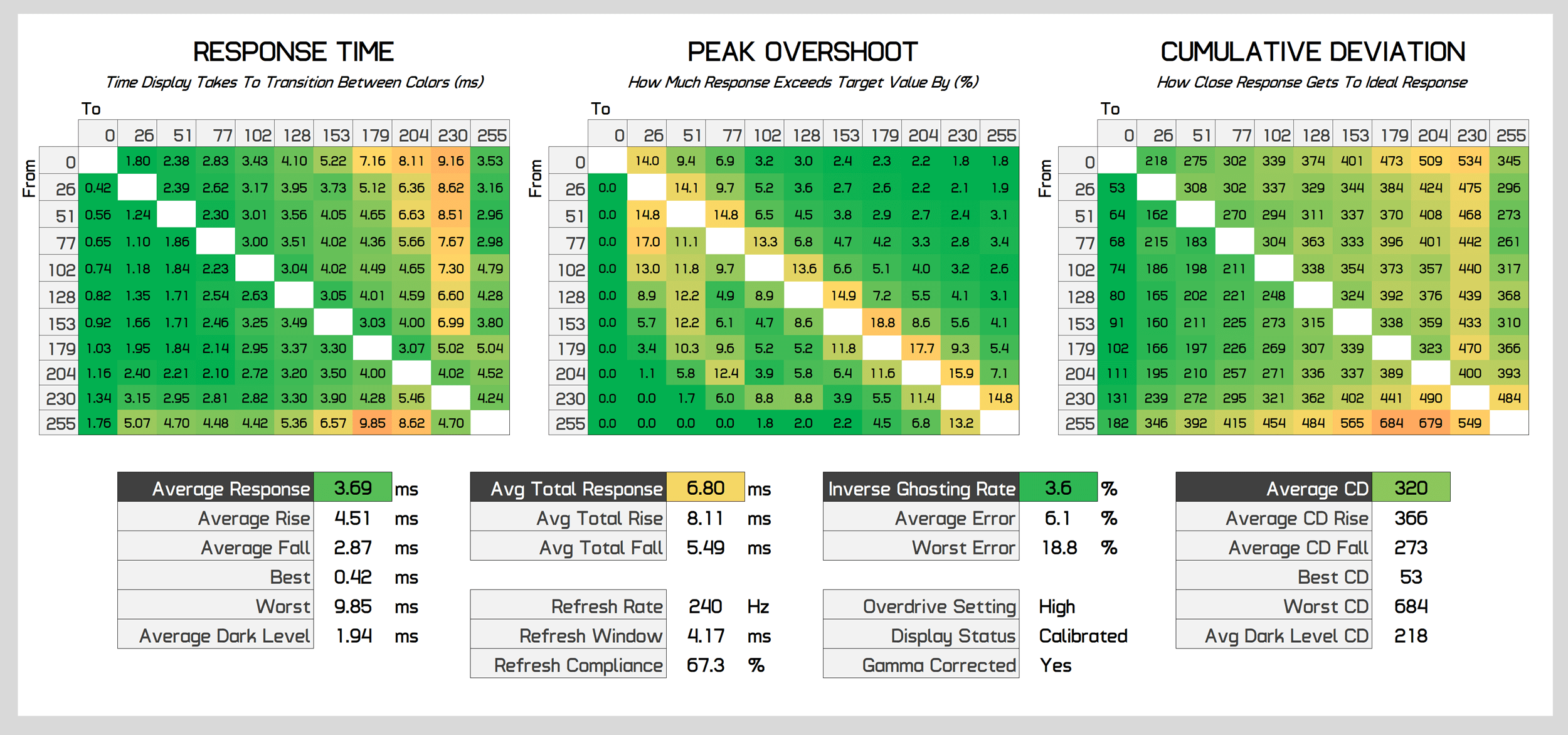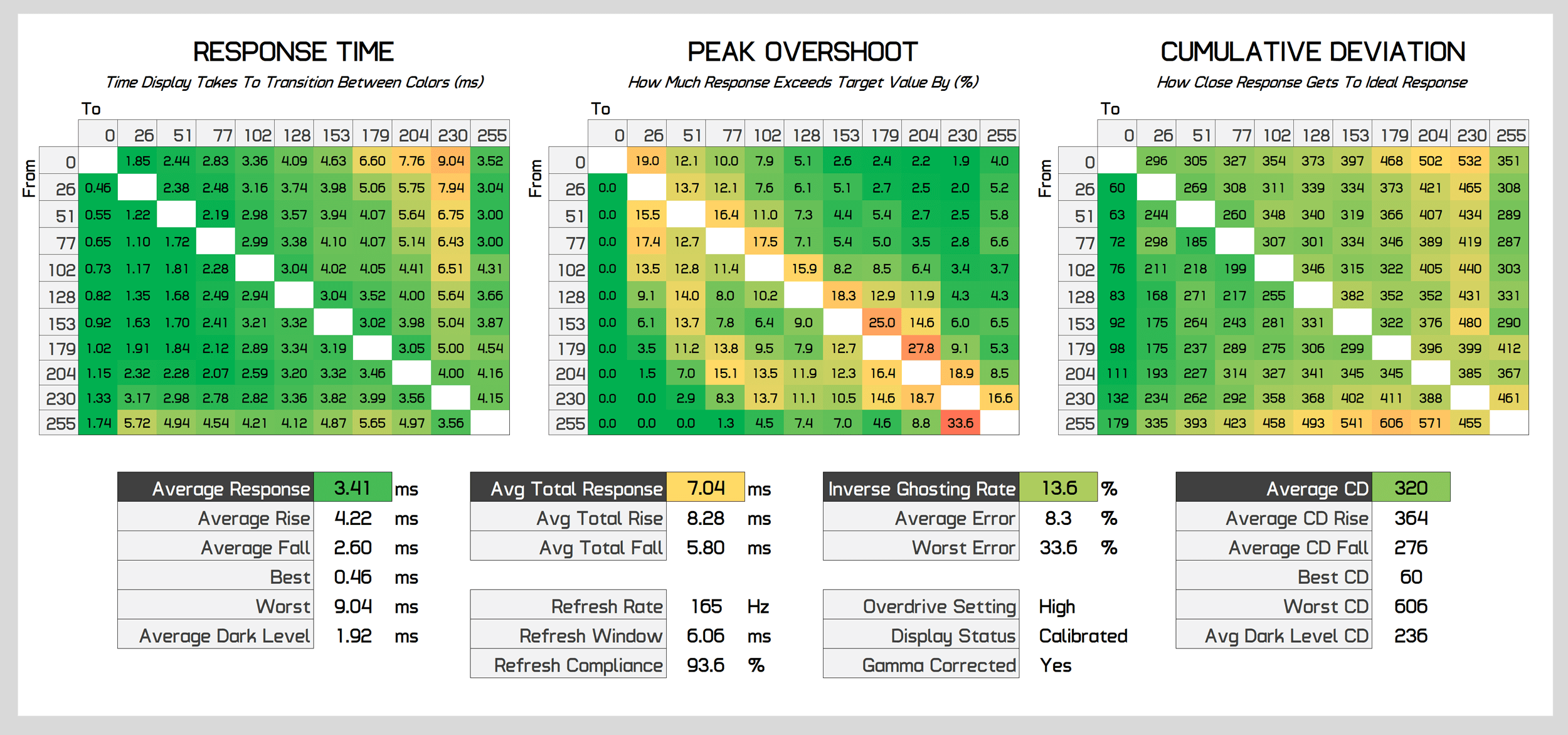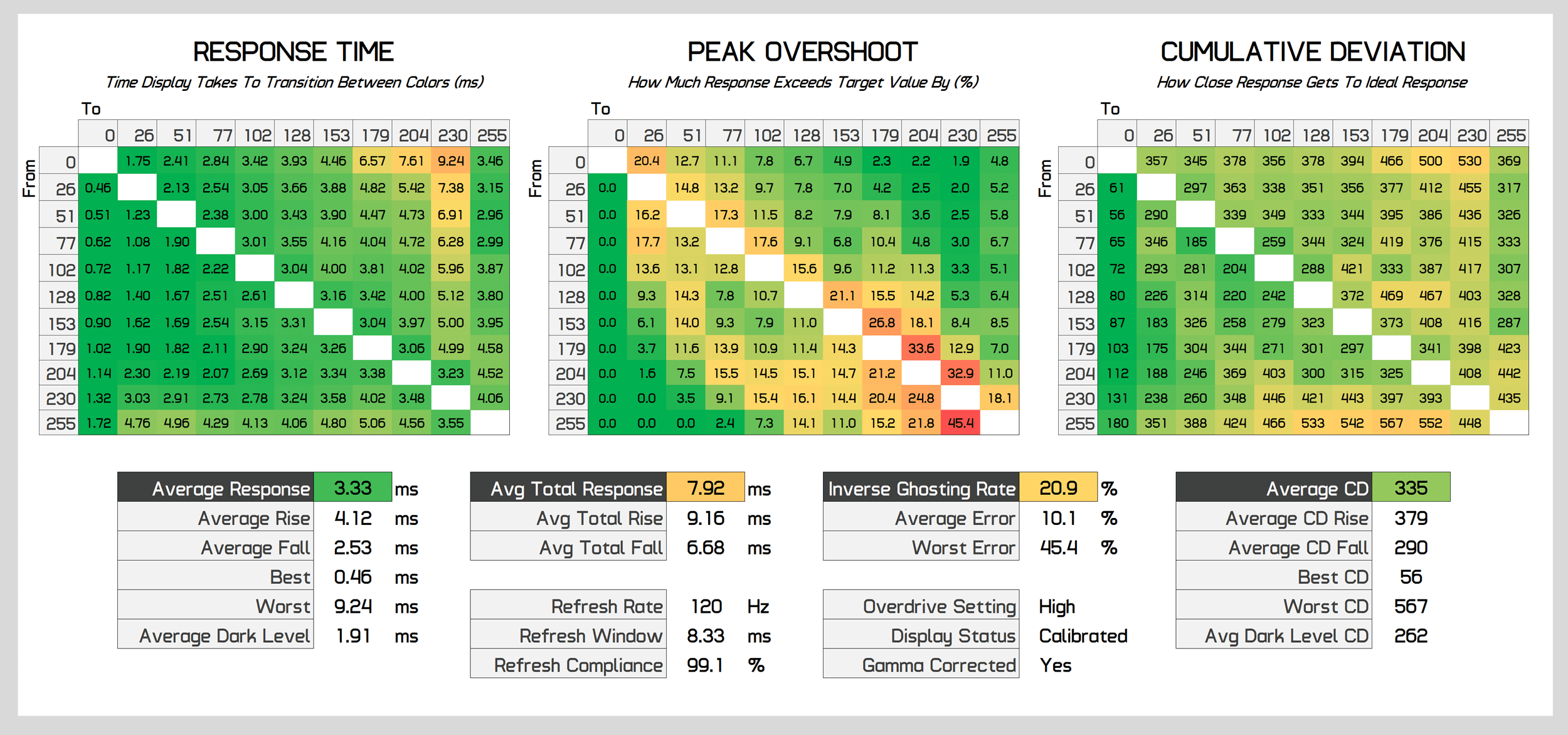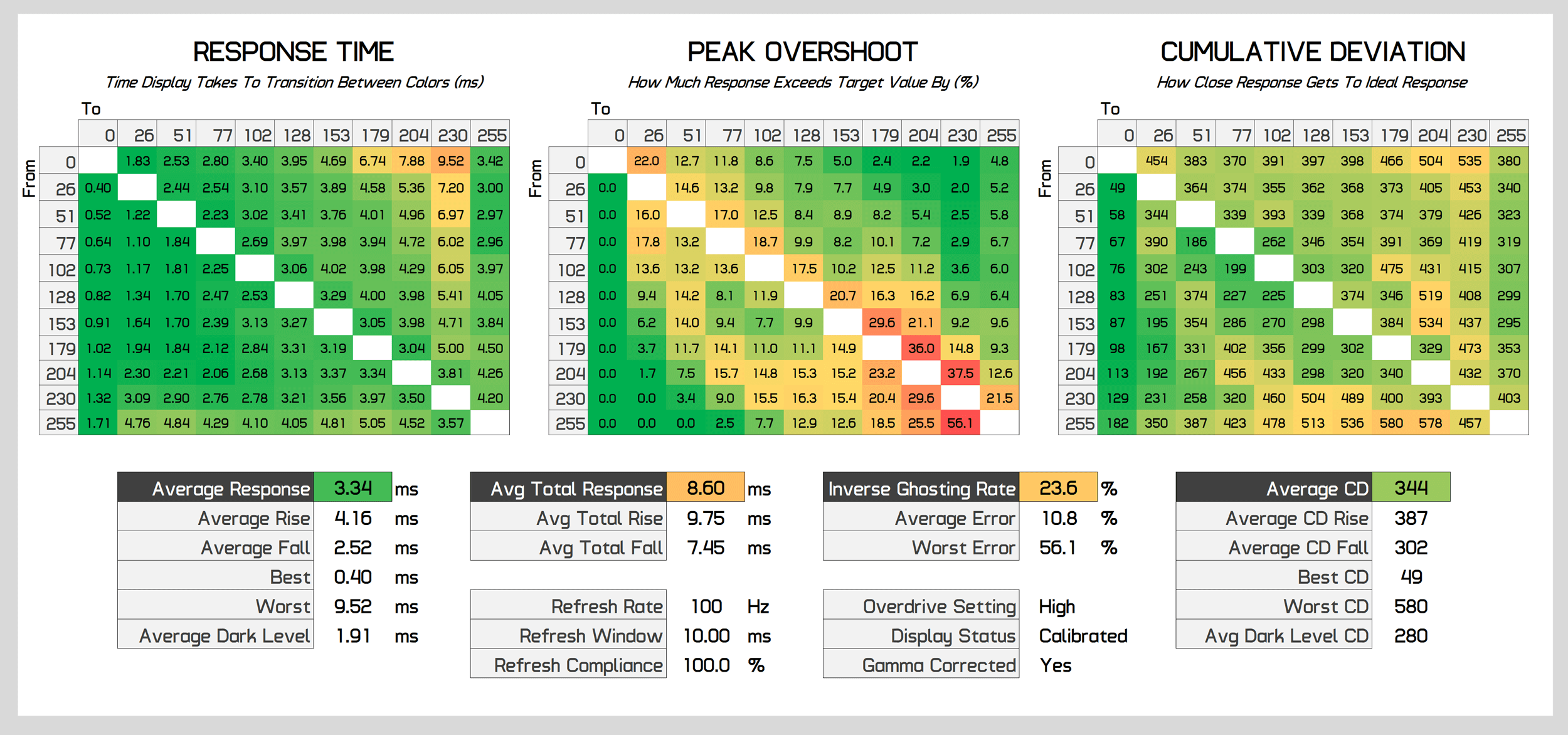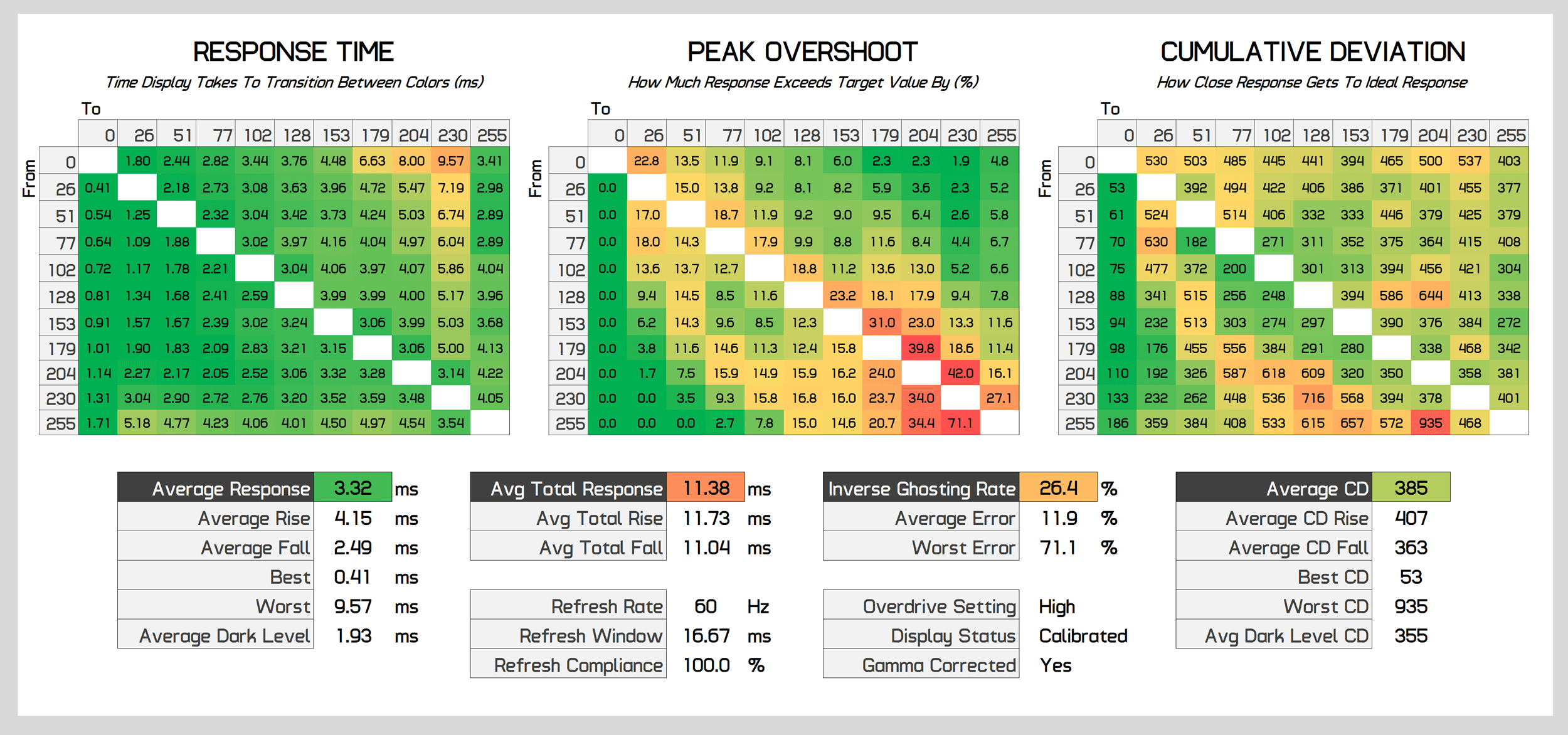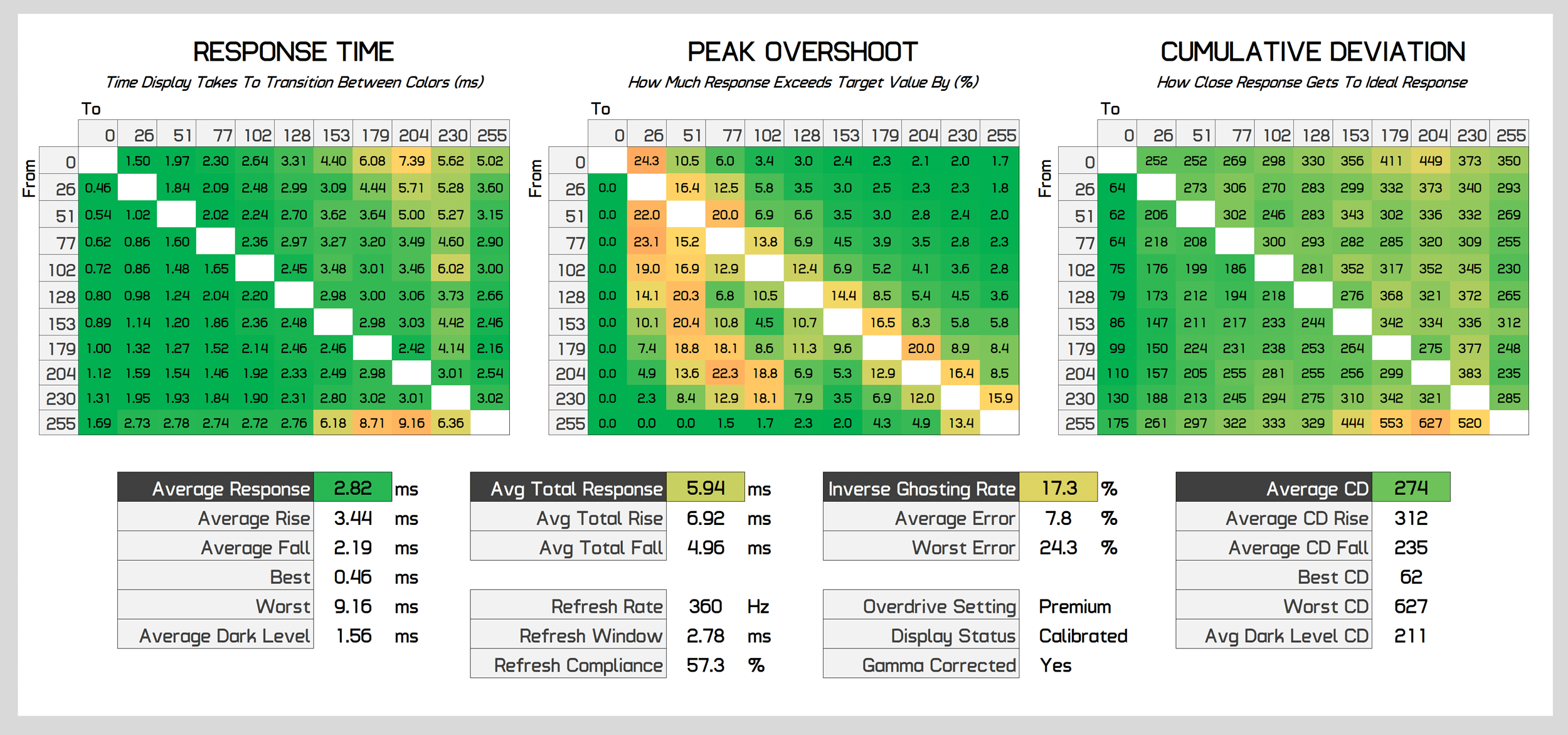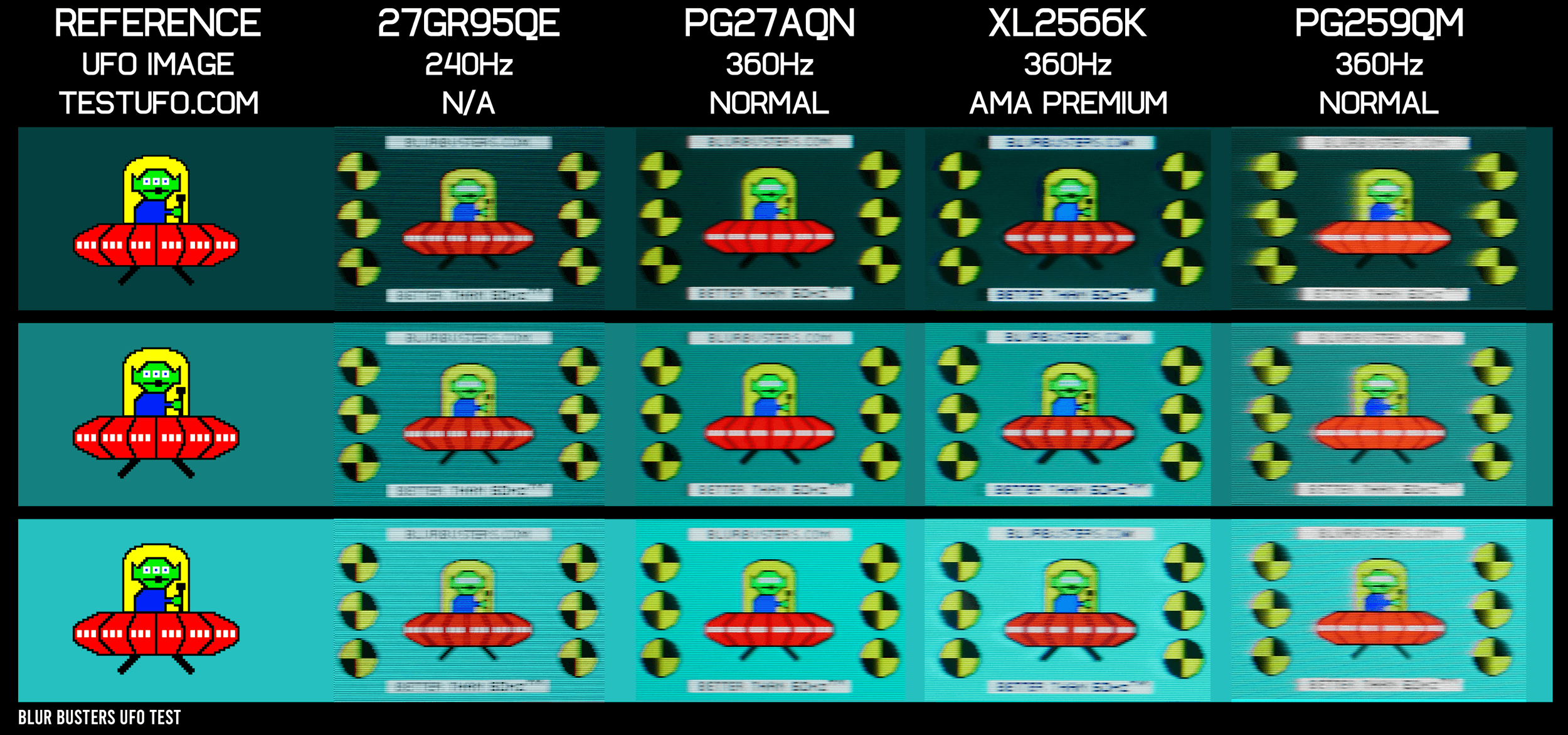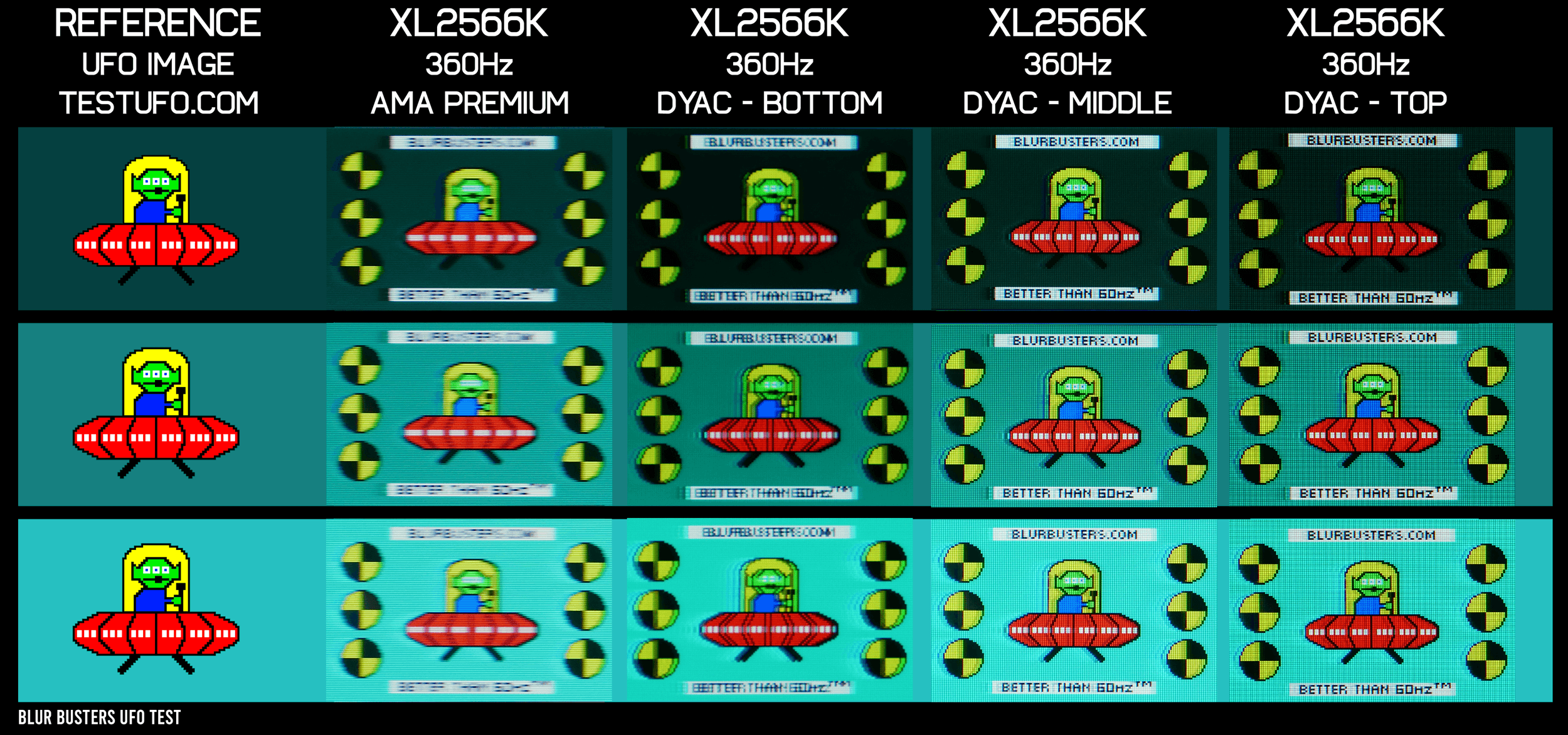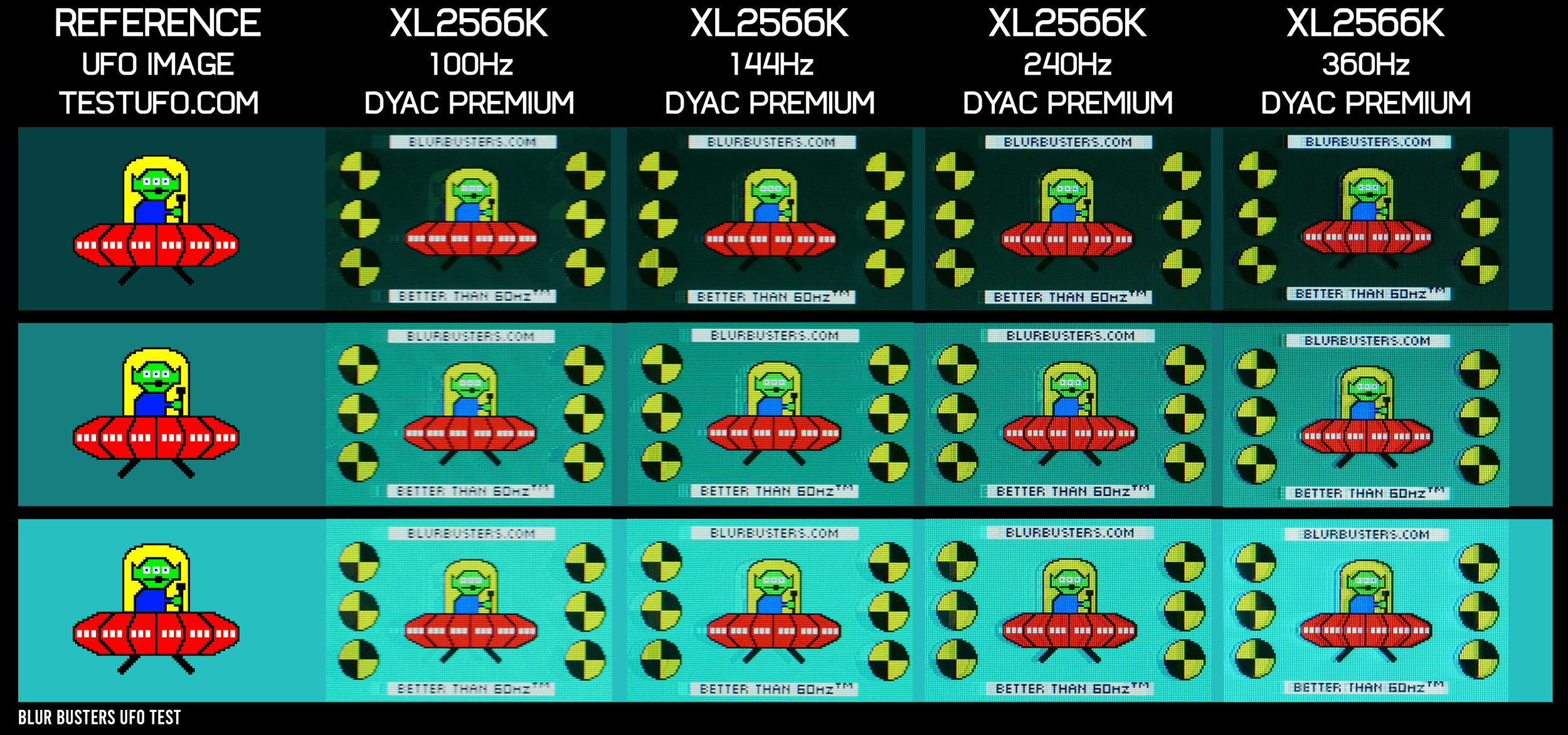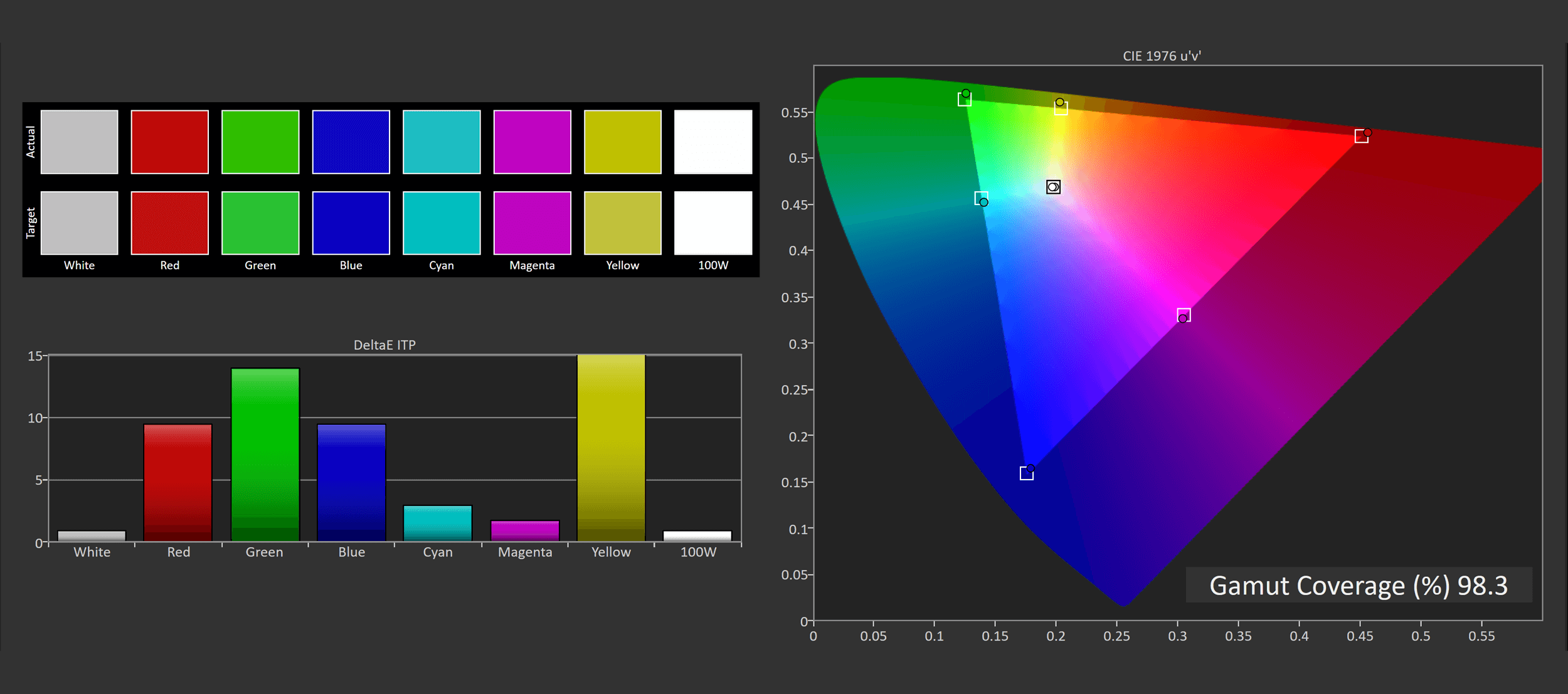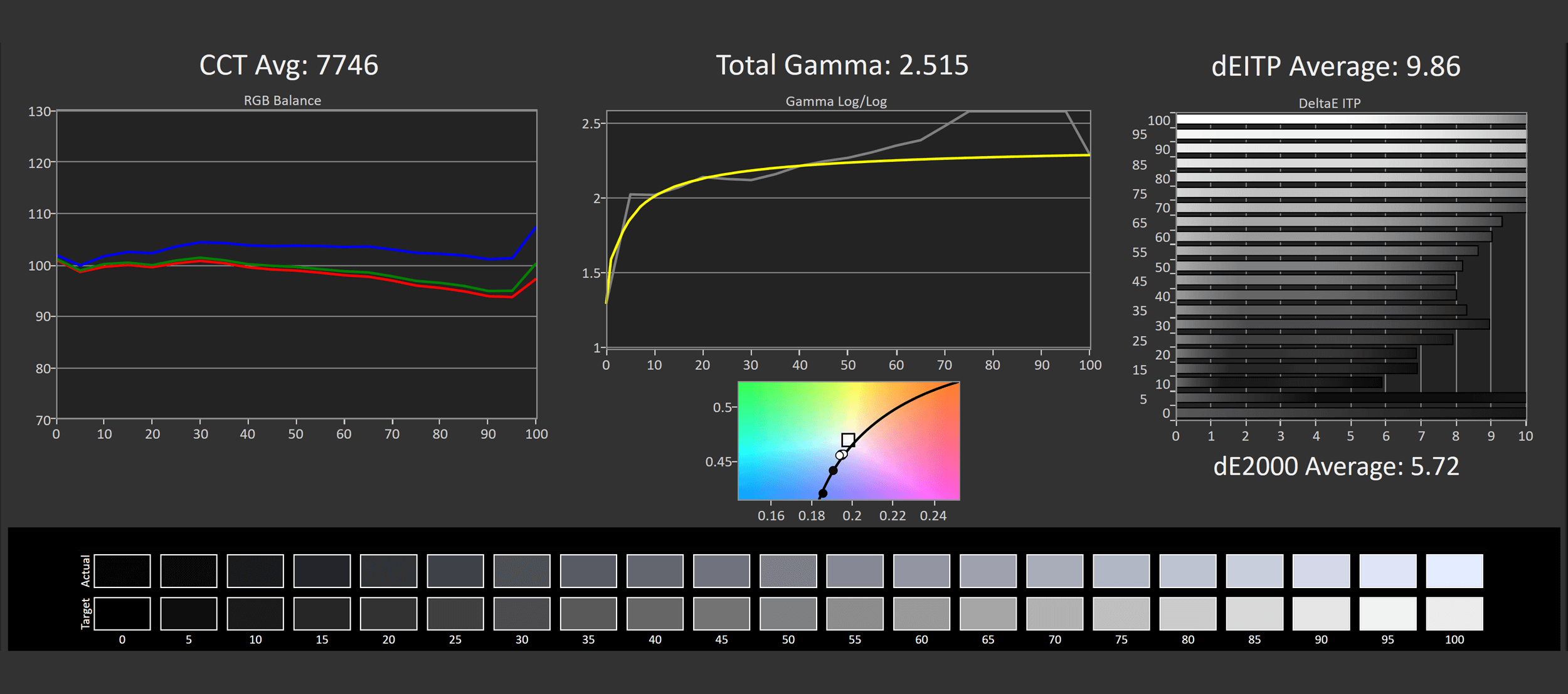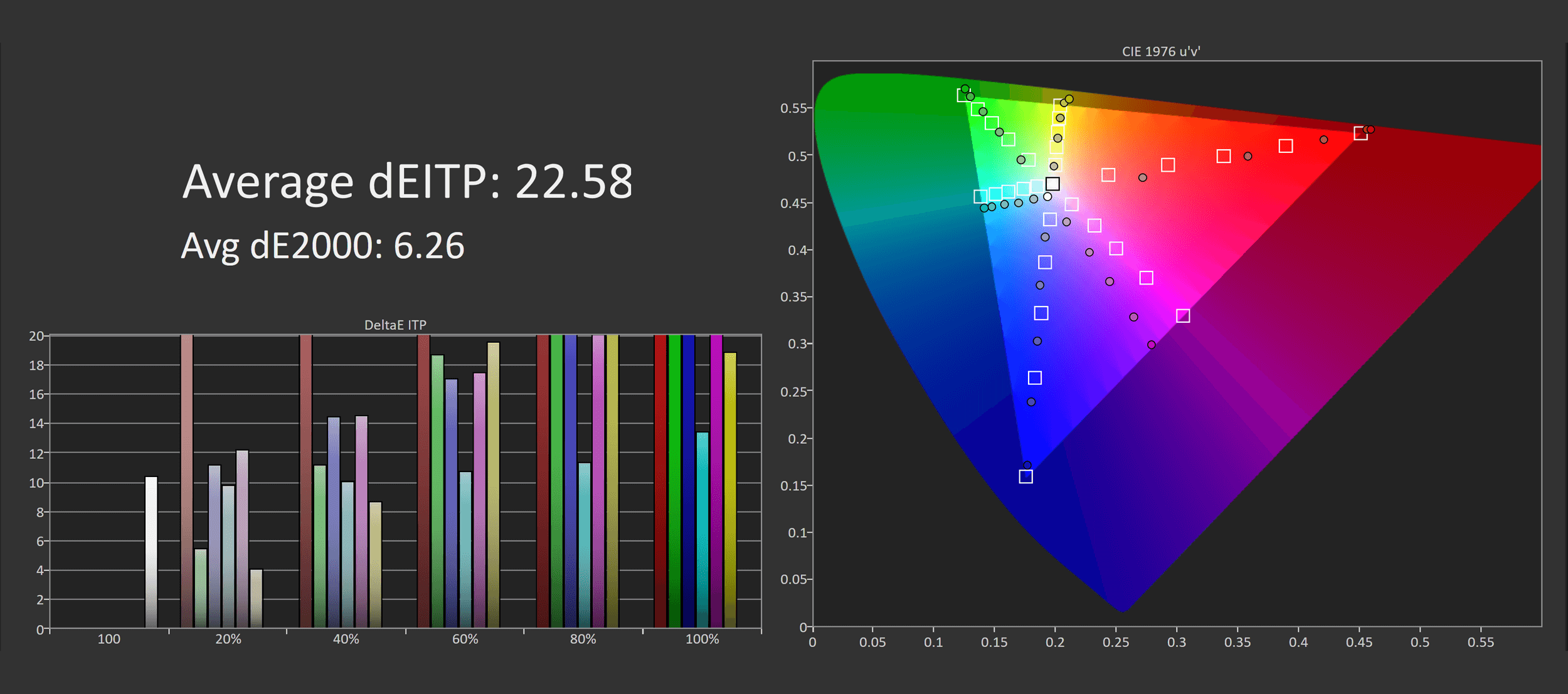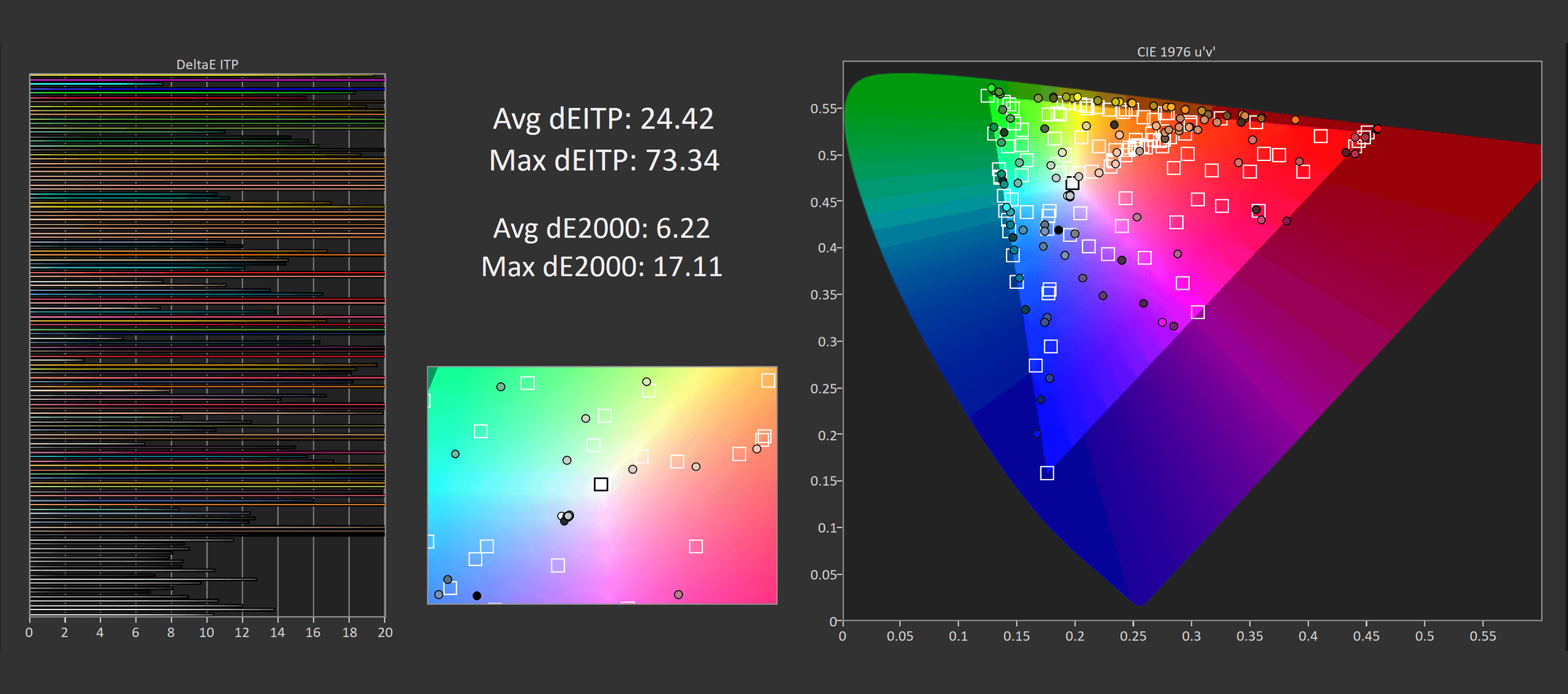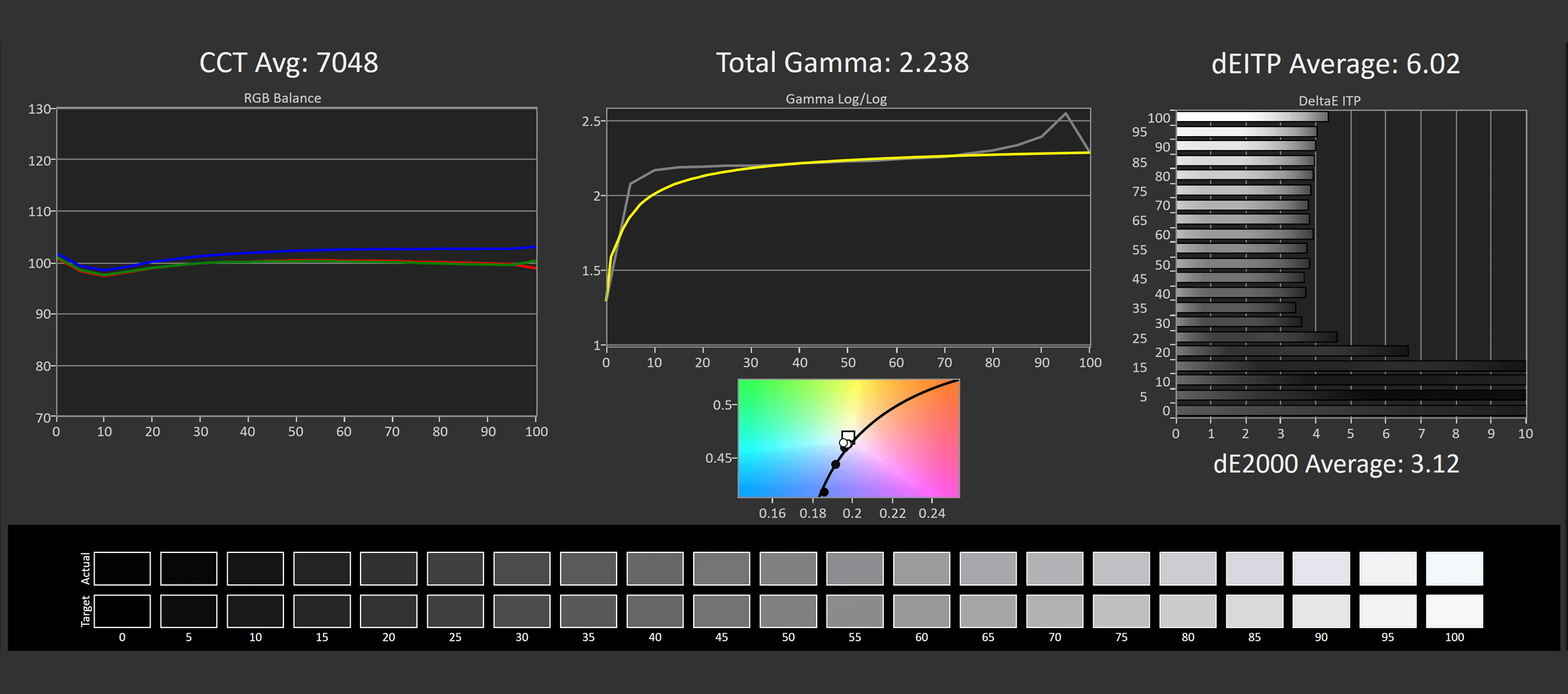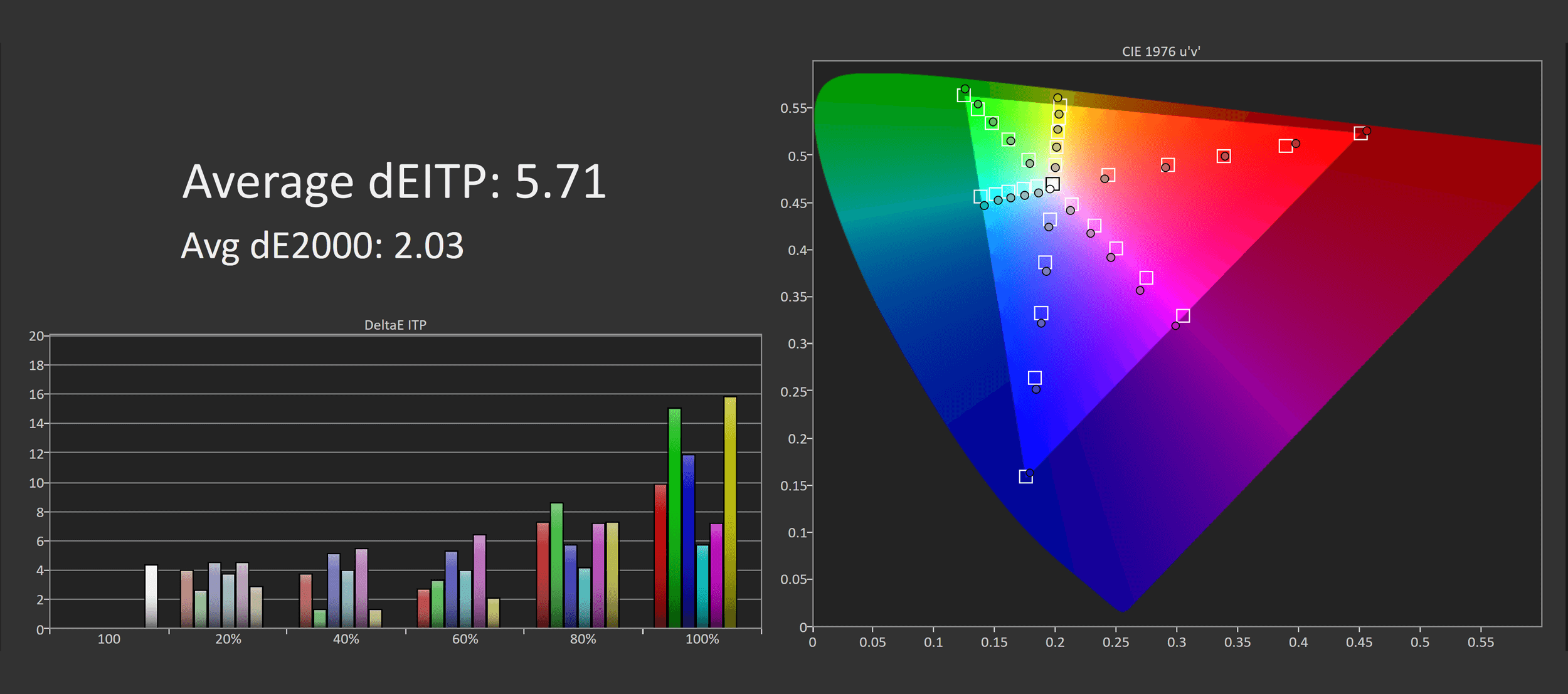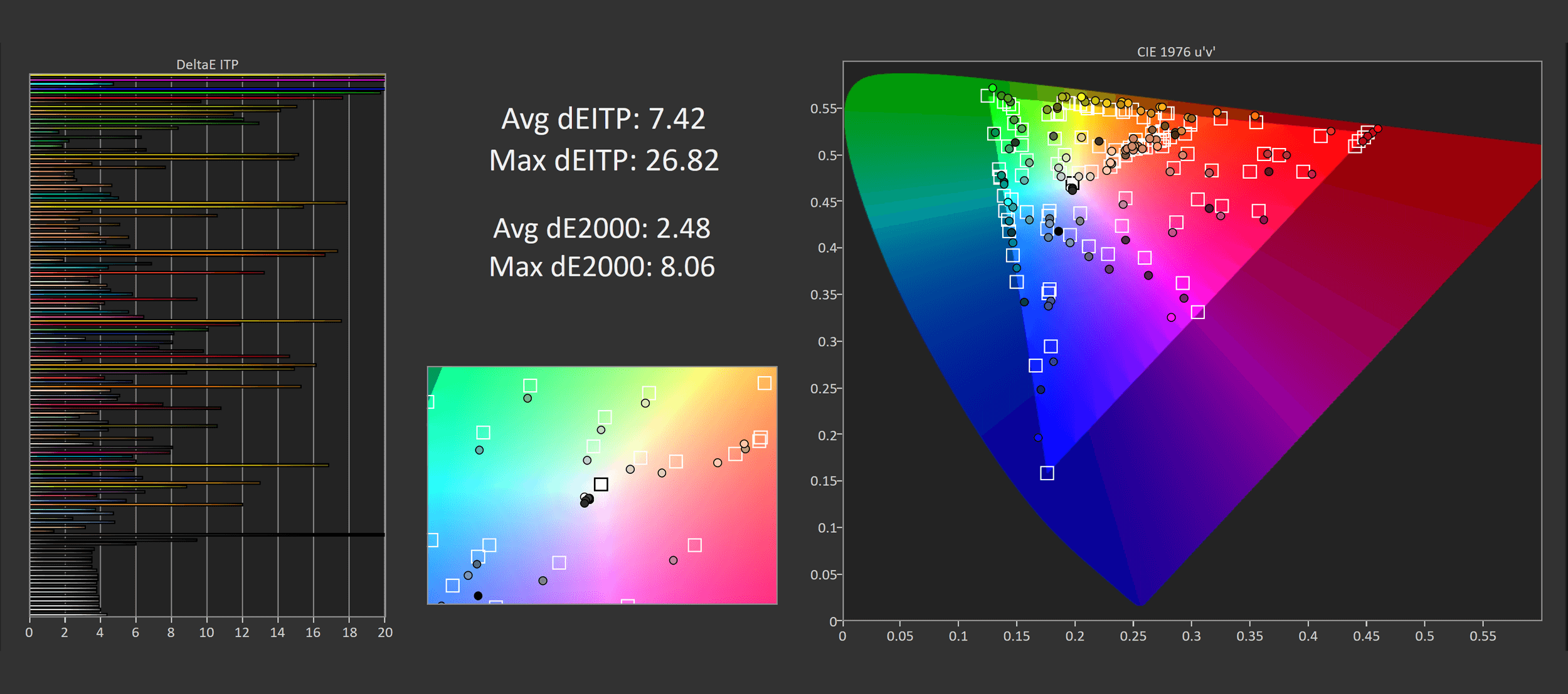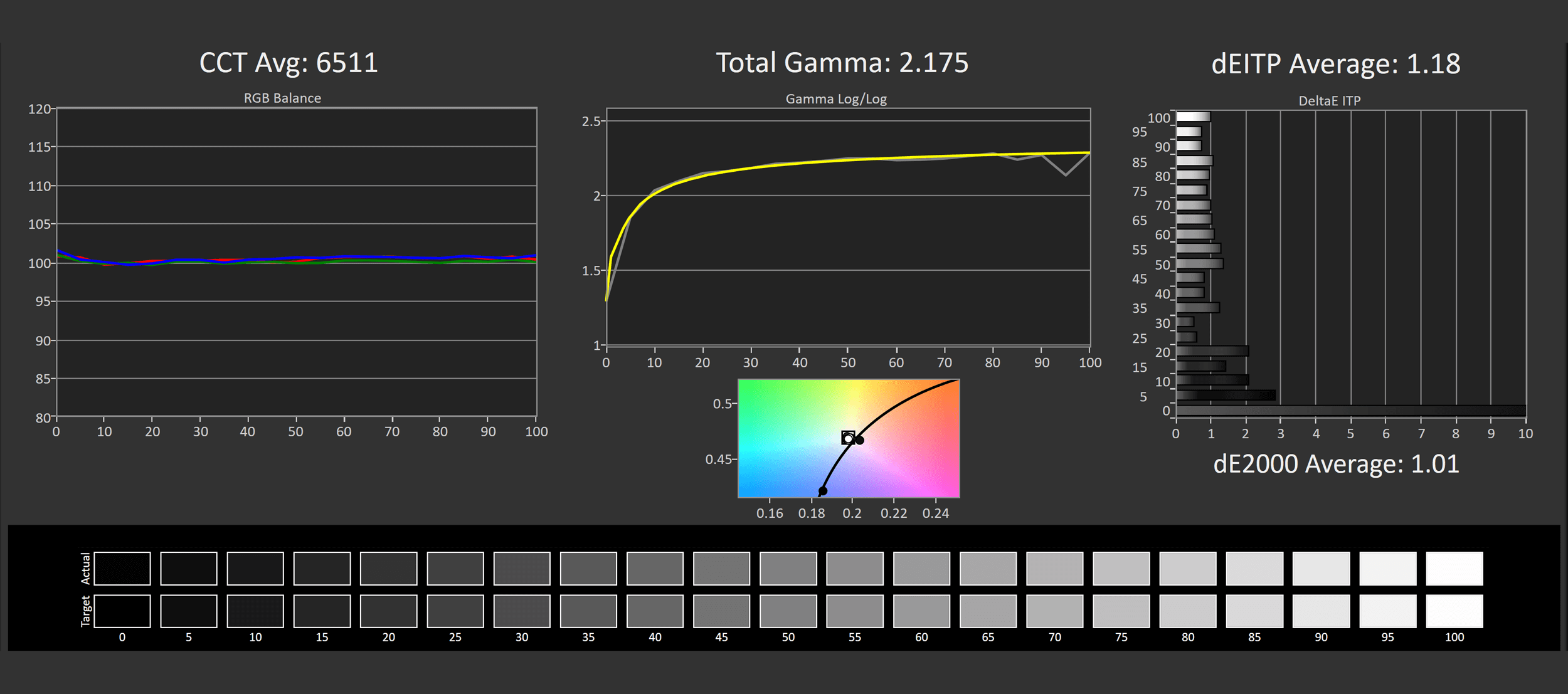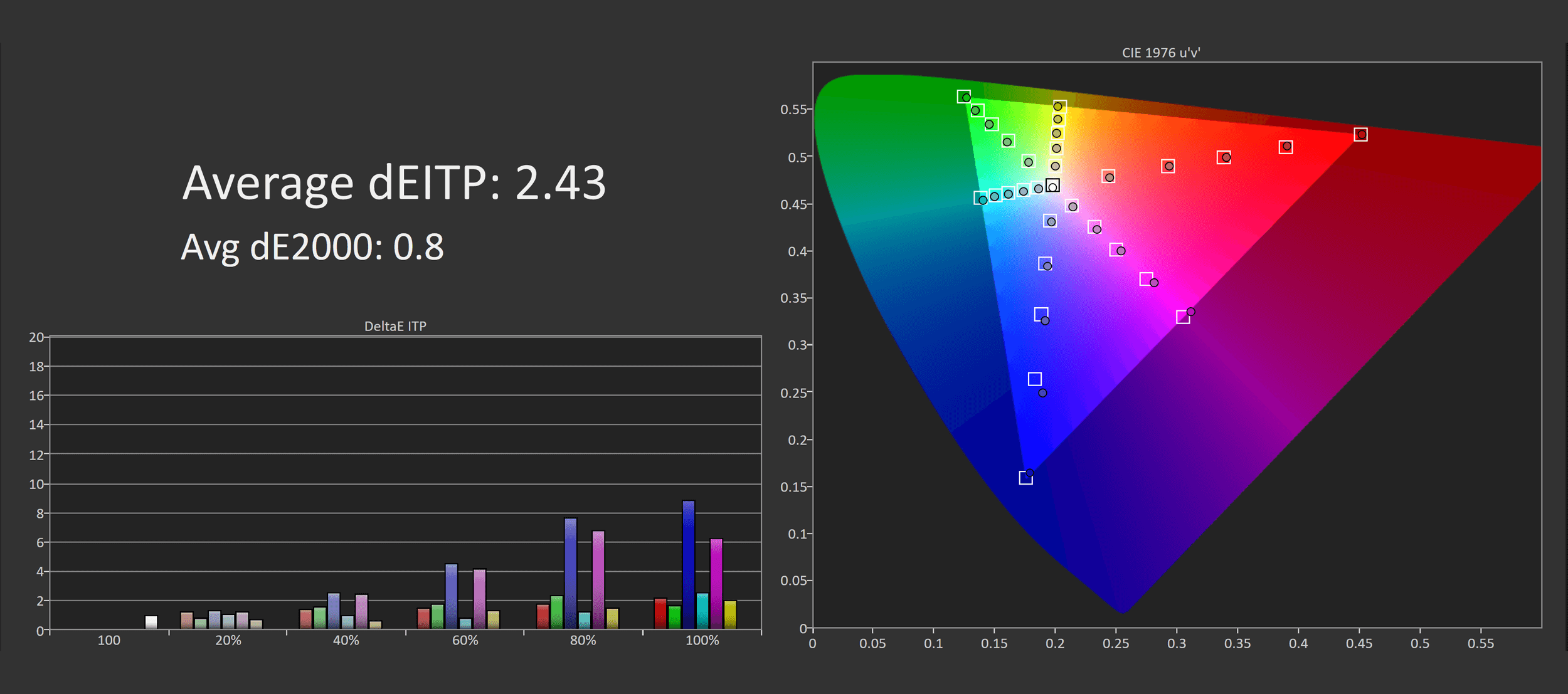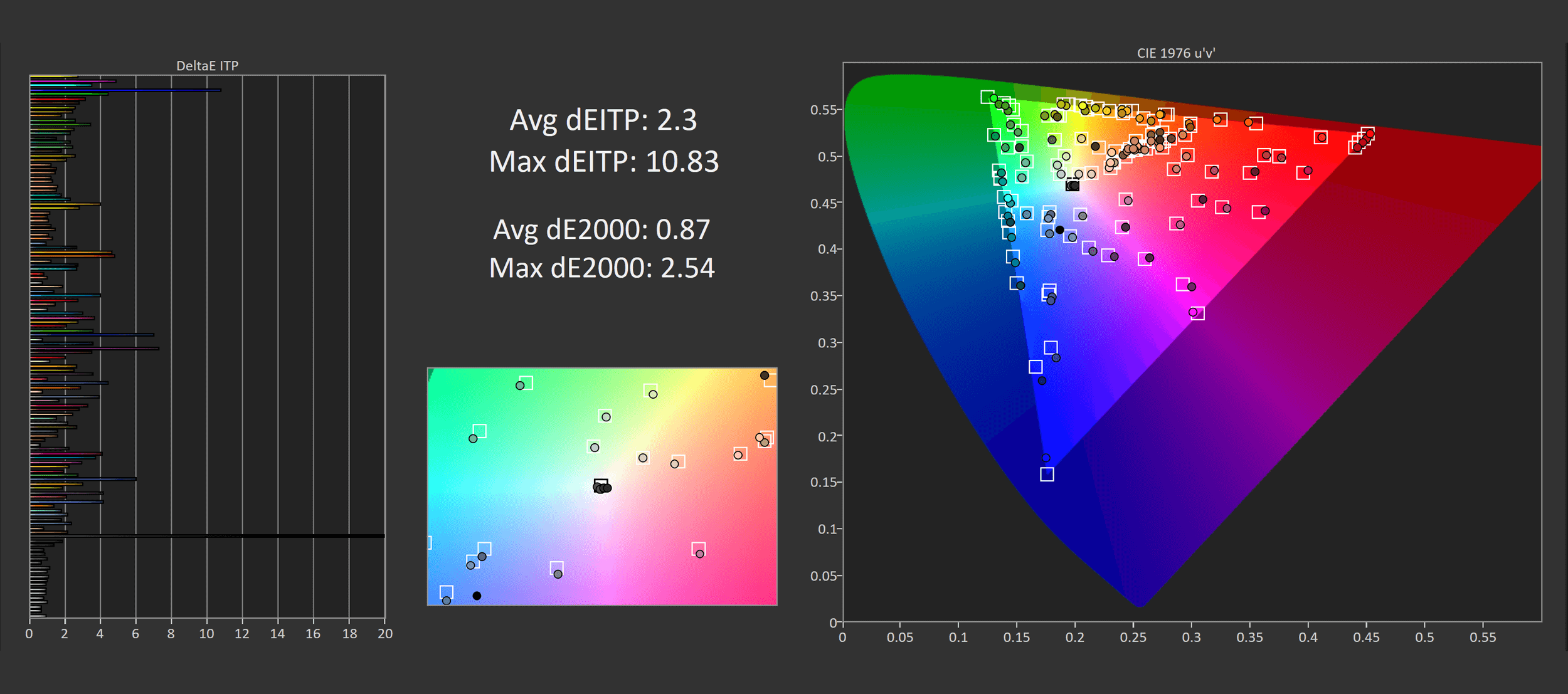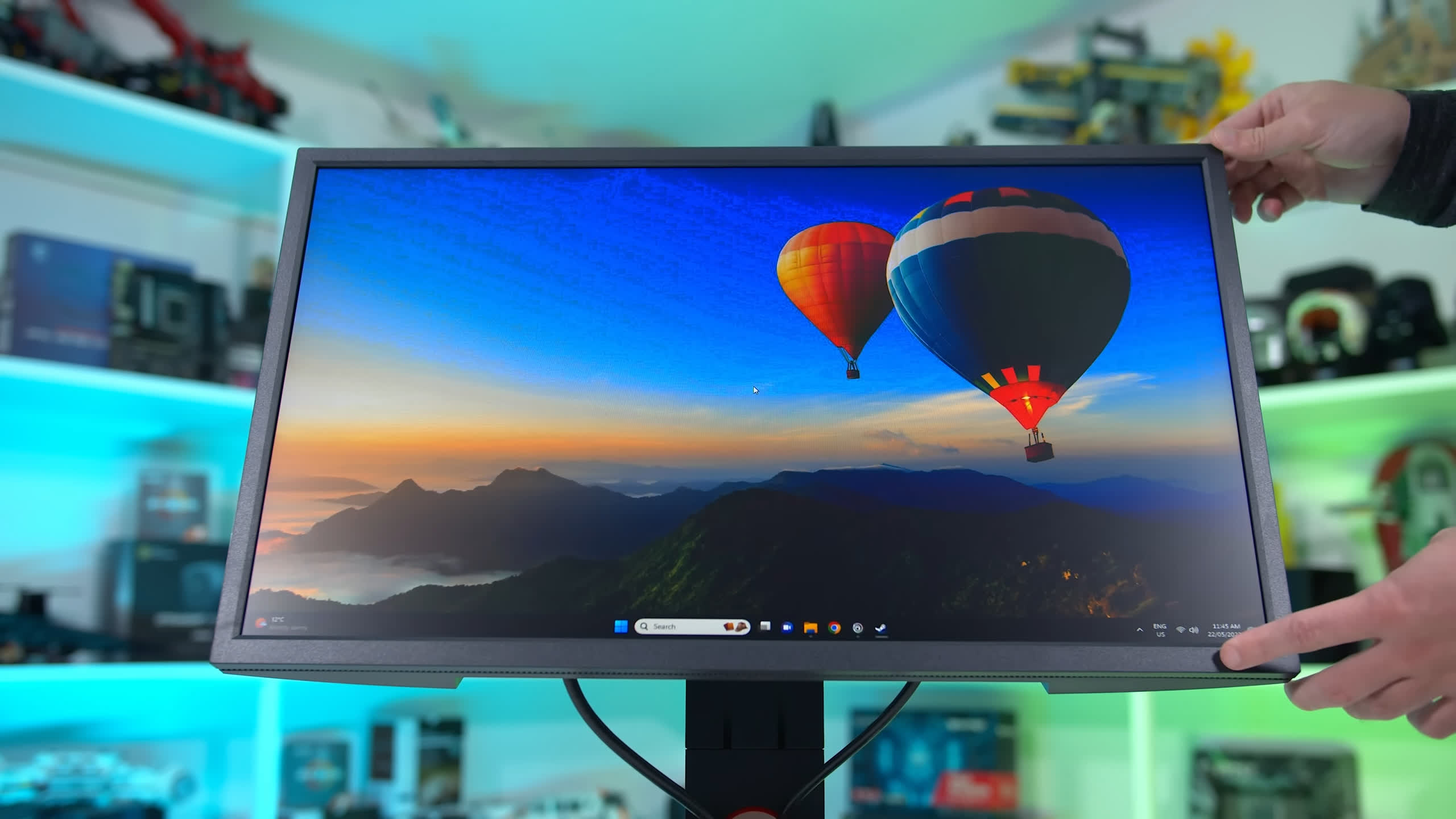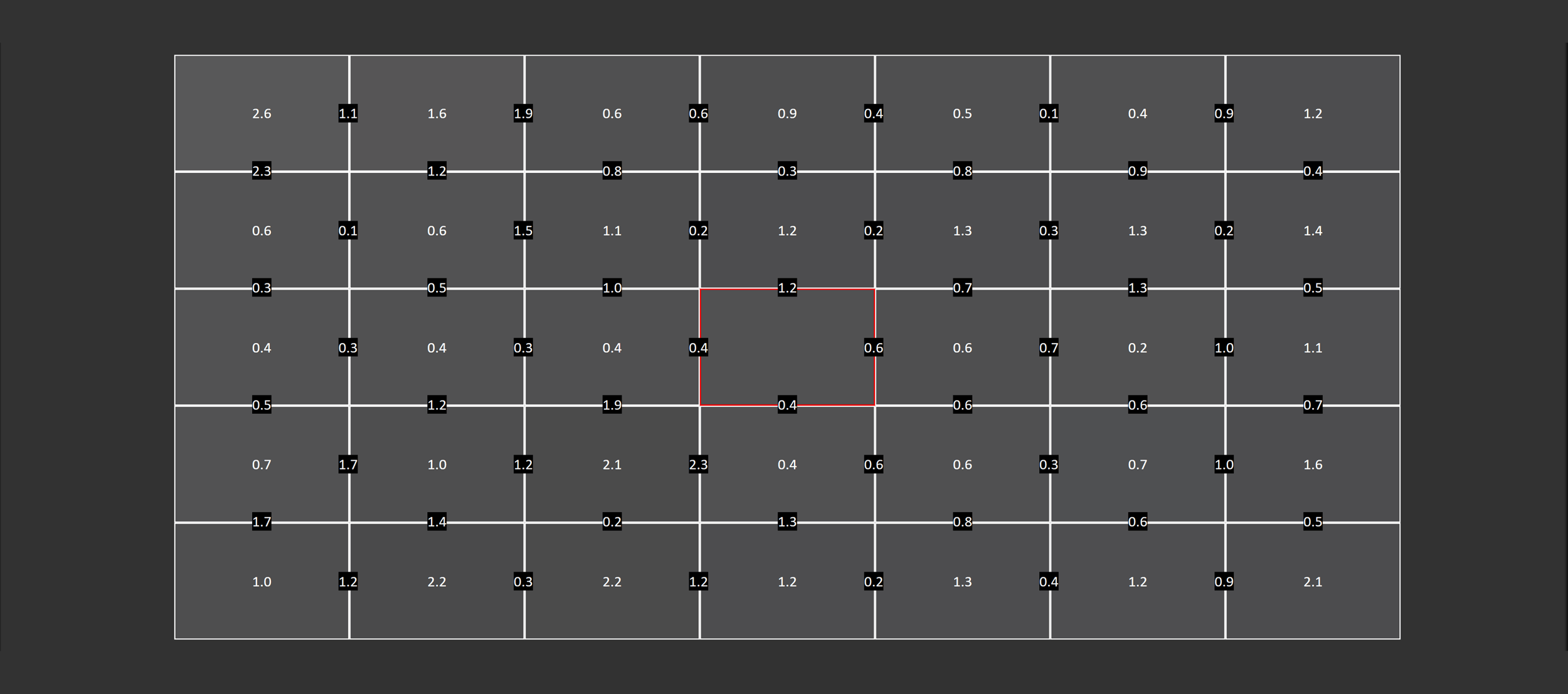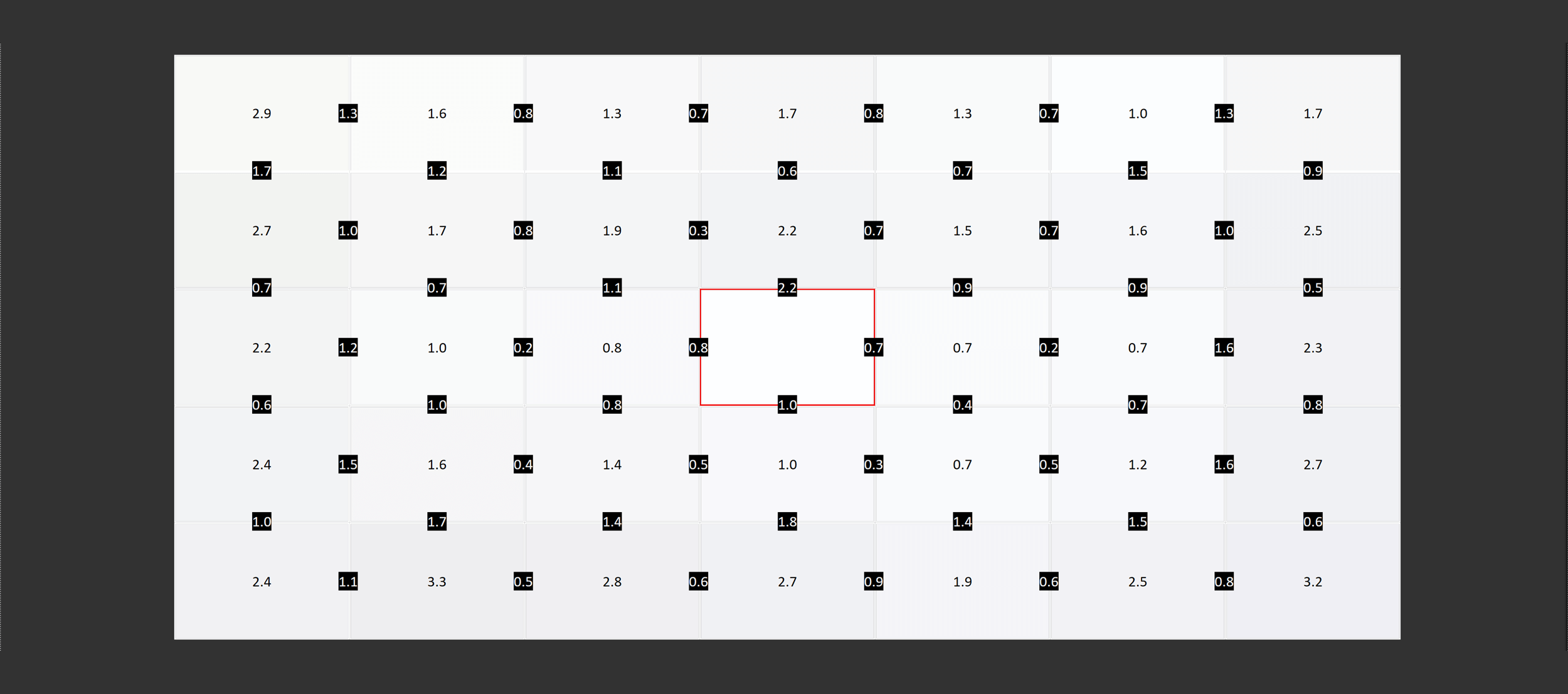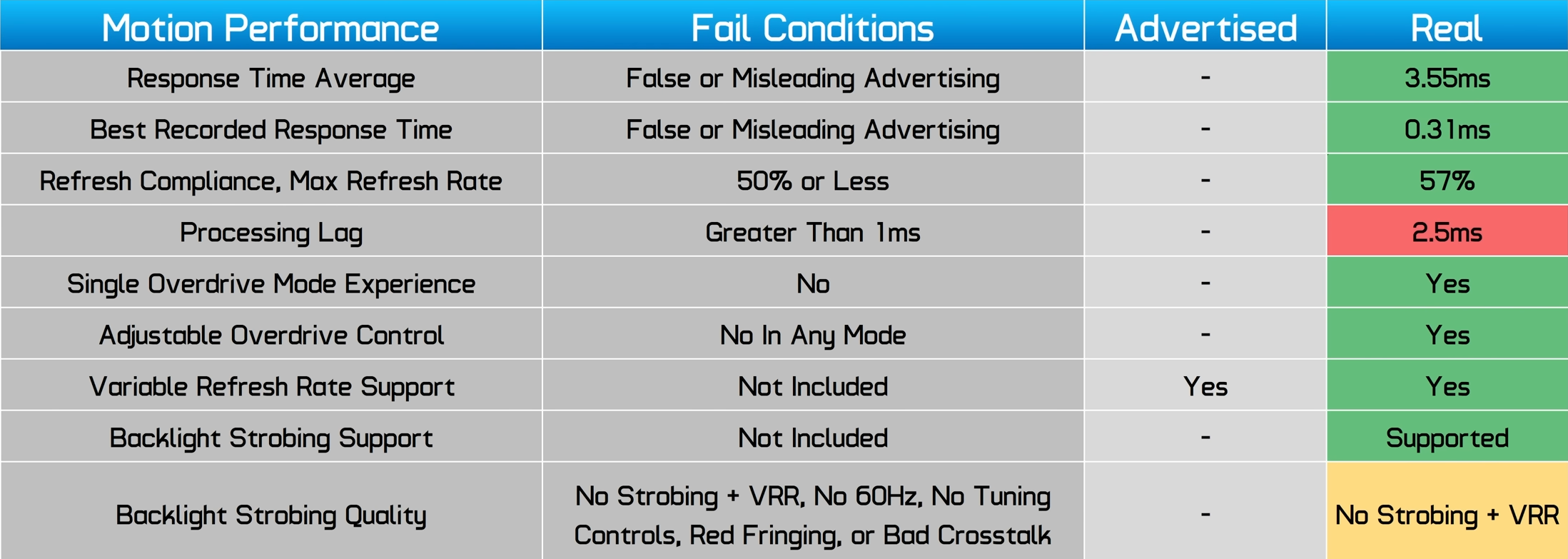Today we're testing a product that we've wanted to get our hands on for some time now: the BenQ Zowie XL2566K. We've spent a considerable amount of time over the past six months evaluating some of the fastest monitors on the market, be it the latest 240Hz OLEDs or the 1440p 360Hz IPS LCD that debuted last year.
However, none are purported to be as swift as this class-leading esports monitor from BenQ, making it intriguing to compare the top-tier OLEDs and LCDs we've tested previously with the XL2566K.
BenQ has optimized this product primarily for speed. We're examining a 24.5-inch 1080p 360Hz gaming monitor utilizing TN LCD technology. Yes, we're talking about TN tech, not IPS or VA. Some critics have labeled TN a defunct technology, but panel manufacturers and display OEMs like BenQ maintain it's still the fastest available and optimal for hardcore competitive multiplayer gaming. The amalgamation of 360Hz and TN is expected to deliver unparalleled motion clarity.
Enhancing the package is the implementation of BenQ's DyAc+ backlight strobing technology, reputed as one of the best-tuned blur reduction techniques available. The underlying concept suggests that the fusion of an ultra-fast 360Hz TN panel with superior backlight strobing should yield unsurpassed motion performance – a notion we're keen on testing today, before exploring 500Hz monitors in the near future, hopefully.
Features and Design
Designed almost exclusively for competitive esports gamers, the XL2566K is a classic example of function over form. This monitor might not win any beauty contests, sporting thick bezels on the front and a relatively low resolution. However, it's specifically engineered for competitive play. Lower screen resolution simplifies the attainment of high frame rates natively in today's esports games, while thicker bezels minimize distractions and reduce reflections – especially when paired with the included glare-reducing side panels.
The stand provides a high degree of ergonomic flexibility, including height, tilt, swivel, and pivot support. The base of the stand is also quite compact, allowing for a variety of keyboard and mouse positions, yet it remains a sturdy package. While the build quality, primarily standard plastic across all outer surfaces, won't astound, there are some useful additions like the foldable headphone stand on the rear and the convenient carrying handle.
Connectivity is satisfactory, offering one DisplayPort and two HDMI ports. Regrettably, the HDMI ports only support 2.0 spec instead of 2.1, limiting them to 240Hz. This leaves only the DisplayPort 1.4 connector capable of fully handling 360Hz input, which could disappoint those wishing to connect multiple PCs.
The on-screen display is controllable through a directional toggle, and it was intriguing to examine the included features. DyAc+ is naturally key, but there aren't many other gaming features. The black equalizer is one exception, but there are no crosshairs or FPS counters like those seen on many other gaming monitors.
We find this acceptable, particularly on a professional-style gaming monitor like this – it's unwise to provide access to a potential cheat feature like crosshairs in a tournament setting where every player uses the same monitor. However, this does highlight the disparities between casual competitive multiplayer monitors and devices specifically designed for esports pros.
Display Performance
Let's delve into the crucial aspect: motion performance. Regarding response time performance and overdrive settings, the Zowie XL2566K features three built-in presets along with an adjustable slider for full user customization of overdrive. This is a great feature to have, even if not essential, as the included modes are quite satisfactory. The only mode we would advise against using, except possibly for low refresh rate gaming, is the Off mode.
The question arises: should you opt for the High mode or the Premium mode, barring user customization? The High mode is superior across the refresh rate spectrum. While it's not the absolute quickest at 360Hz, it still offers impressive speed with a 3.96ms grey to grey average and minimal to no overshoot. However, refresh compliance is slightly low for a 360Hz monitor with a refresh window of just 2.78ms.
Upon examining across the refresh rate range, the High mode emerges as an excellent choice, maintaining performance in the 3 to 4ms range right down to 60Hz, with acceptable levels of overshoot. This provides a single overdrive mode experience as well as elite speed, resulting in a highly optimized configuration, particularly below 240Hz.
For gamers adamant about having the fastest performance and predominantly playing at the monitor's maximum refresh rate, the Premium mode is ideal. It reduces the grey to grey average to 2.82ms without significantly increasing overshoot, although there is a relative increase compared to the High mode. Cumulative deviation in this configuration is excellent for an LCD, but as we approach 240Hz and especially below 200Hz, there is a high level of overshoot. As we mentioned, this mode is best optimized for the highest refresh rates. If you're certain you'll be gaming at a locked 360 FPS or higher all the time, the Premium mode makes sense. For all other users, the High mode is ideal. User customization could result in a slight performance increase, but we believe it's not worth the effort since the High mode functions just fine.
This advantage immediately positions the BenQ XL2566K above its LCD competitors, such as the premium Asus ROG Swift PG27AQN that offers a 1440p 360Hz experience. The Asus model doesn't truly provide a single overdrive mode experience, being mainly optimized for the highest refresh rates. The XL2566K is better optimized across a broader range of refresh rates, likely due to the utilization of TN LCD technology instead of IPS.
The comparison of the XL2566K with other monitors is quite intriguing. At the maximum refresh rate using the best overdrive setting, this BenQ monitor ranks among the fastest LCDs we've tested, though it doesn't claim the top spot. The PG27AQN has a faster grey to grey average but achieves this at a higher level of overshoot. The same holds true for the Samsung Neo G8, a 240Hz VA panel. The XL2566K does have superior cumulative deviation compared to the Neo G8 when comparing the fastest settings, but the balance of speed and overshoot is quite similar to the PG27AQN, making it challenging to declare a winner between the two 360Hz options. This shows that the Asus model, using IPS technology, can match this TN monitor in speed under these conditions – an impressive feat considering IPS's performance drawbacks compared to TN.
However, this BenQ monitor doesn't quite compete with OLEDs. While it delivers impressive speed for an LCD at 360Hz, it's somewhat overshadowed by the two OLED panel types we've tested. This doesn't conclude the competition, of course, as the XL2566K supports backlight strobing while the OLEDs do not. Nevertheless, it's evident that even a TN LCD has some catching up to do to reach where OLEDs stand today.
Analyzing the average performance of the XL2566K across the entire refresh rate range, it becomes evident that this BenQ monitor takes a significantly different approach to performance than the Asus ROG Swift PG27AQN. While it's approximately 1ms slower on average, it achieves this speed with a lower inverse ghosting rate. This implies that the BenQ monitor operates at this speed with fewer artifacts than its counterparts. Essentially, the Asus 360Hz option appears to be pushing its limits, while the BenQ opts for a more balanced motion clarity approach.
Considering the cumulative deviation, the XL2566K on average is the best LCD monitor that's been tested. This showcases the perfect balance between speed and overshoot, something only achievable with a TN LCD at this point. A result of 334 is 22% better than the PG27AQN with its IPS panel and Samsung Odyssey G7 with its VA panel. It also outperforms the HP Omen X 27, another fast TN monitor, by 18%. While not a groundbreaking margin, most refresh rates on the XL2566K do seem a bit clearer than its LCD competition without employing strobing.
However, OLEDs continue to lead the race, typically offering over five times the performance. While no OLED offers the wide range of refresh rates that the XL2566K does, the additional speed of an OLED allows it to perform like a higher refresh rate LCD from a lower refresh rate.
The XL2566K is undoubtedly designed for 360Hz gaming, but it also excels at lower refresh rates like 120Hz. Here, its speed, combined with minimal artifacts, remains unmatched by other LCDs. At 60Hz, the BenQ monitor performs well, albeit not as strong as at other refresh rates. That said, it's unlikely that many users would choose to game at 60Hz on this device.
Regarding input lag, the results were good, although the processing delay was slightly higher than expected at 2.5ms. A variety of configurations were tested, including both adaptive sync enabled and disabled, but performance didn't seem to improve beyond 2.5ms of processing lag. Nevertheless, this is still a reasonably good result, leading to a responsive experience.
As for power consumption, the XL2566K does a great job. Although it's not the most efficient monitor, it's among the top half of contenders, consuming only 24W of power after calibration.
The key selling point of the XL2566K is DyAc+. Without an interest in backlight strobing, this monitor might not be the best choice, as it's clearly designed to be used with DyAc+ enabled – it even comes with DyAc+ enabled by default. This feature aims to switch the backlight on and off between refresh cycles, reducing persistence blur and improving motion clarity, thereby making this display more competitive with other products in terms of motion clarity. It offers the best experience you can get.
In the Blur Busters UFO Test, with DyAc+ disabled and compared to other monitors at 360Hz, there isn't much difference between the XL2566K and PG27AQN. They both look very similar, which isn't surprising given their similar response testing data. The LG 27GR95QE, with its 240Hz OLED, is also competitive, albeit not quite as good. The faster response times somewhat compensate for the lower refresh rate, but without strobing enabled, it's difficult to declare a winner, particularly between the 360Hz LCDs.
However, when DyAc+ is enabled, BenQ's XL2566K clearly outperforms its competitors. The PG27AQN doesn't support backlight strobing, and neither do any of the 240Hz OLEDs tested, granting the XL2566K a significant advantage in motion clarity. DyAc+ on the Premium setting is exceptionally impressive, delivering the clearest image seen so far from this kind of mode, with little to no strobe crosstalk and a perfectly timed strobe that puts the clearest image in the center of the screen.
There are two additional advantages to DyAc+. First, you get this level of strobing at other refresh rates as well, more or less. Gaming with strobing at 240Hz, 144Hz, or even 100Hz is viable, with only a minor reduction in quality. However, 60Hz doesn't fare as well; the practical floor is around 100Hz. The second advantage is that the clearest DyAc+ Premium mode is fully usable without a significant sacrifice in brightness. While some modes have locked brightness or are exceedingly dim, this is not the case with this monitor. Here, the best strobed image is still achievable with brightness around 330 nits, making strobing more usable than on many competitors.
However, DyAc+ is designed for esports gaming, so it does have limitations. The most significant one is that it can't be used in conjunction with adaptive sync – a feature other brands offer, typically with worse image quality and motion clarity. This means that DyAc+ only works at fixed refresh rates and thus requires a fixed in-game frame rate for the best results. For instance, if you wanted to use strobing at 360Hz, you'd need to ensure your hardware is powerful enough to run the game at 360 FPS – achievable in a game like Valorant but not so much in Call of Duty. If 360 FPS isn't possible, you'd need to lower the refresh rate of the display and lock the game to that refresh rate. DyAc+ doesn't offer dynamic frame rate capability when enabled.
While this isn't an issue for professional gamers and pro esports players accustomed to high frame rate, low setting gaming, and dealing with fixed refresh rates and frame caps, it doesn't play nicely with excellent motion clarity for single-player games. It isn't designed for this purpose, and you'd probably be better off with an OLED instead.
Color Performance
Color Space: BenQ Zowie XL2566K - D65-P3
Color quality on the XL2566K isn't a key priority as an esports monitor, but it's still worth addressing. This monitor is not designed to impress with its color rendition. It's not a wide-gamut display and only covers around 98% of the sRGB color space. Therefore, it's not recommended to expect high levels of saturation or HDR capabilities, as HDR is not supported at all.
Default Color Performance
Standard Mode Performance
Out of the box, the monitor is set to FPS1 mode, which BenQ states is optimal for CS:GO gaming. As one might expect, a mode designed to maximize visibility of enemies in CS:GO won't necessarily be color accurate, so this mode does not look very good in standard desktop applications. However, switching to the Standard mode results in reasonable performance. It has decent grayscale performance, and saturation looks quite good, all things considered. This mode may not impress with its accuracy, but it's perfectly usable for desktop applications outside of gaming sessions.
Calibrated Color Performance
Additional performance improvements can be achieved through full calibration, and the XL2566K is quite easy to calibrate with excellent results. Professional gamers probably won't want to go through this process, as tinkering with contrast and color settings is likely the best way to game, but it's reassuring to know that accuracy is possible, even on a monitor like this.
The maximum brightness of 353 nits peak is average, but as mentioned earlier, it's commendable to see that strobed brightness is also high, at 330 nits. If desired, you can run this display at 42 nits, though this might not be the optimal configuration for professional gaming.
The native contrast ratio of this panel is quite respectable, improving significantly after calibration compared to its out-of-the-box performance. A recorded ratio of 1091:1 isn't impressive compared to VA LCDs or OLEDs, but it's very serviceable for a TN LCD, which typically sit below 1000:1. This level of contrast aligns with IPS LCDs, a positive outcome.
Viewing Angles
However, the XL2566K does have a significant weakness: viewing angles, which are quite poor, similar to many TN LCDs. For the best experience, you need to be looking at this display straight on; even slight tilting will cause color washing out and degradation. This is consistent with other TNs tested, but you kind of forget how bad the experience is when most LCDs these days use technologies other than TN.
This is certainly a compromise to achieve the speed and functionality desired by competitive gamers.
Uniformity was satisfactory, though there was some fall off around the edges of the panel.
HUB Essentials Checklist
The final section of this review is the HUB Essentials Checklist, which turned out to be quite favorable for BenQ. The only significant deduction was due to the lack of HDMI 2.1, which prevents support for the full 360Hz over HDMI. Otherwise, the results were predominantly positive, with BenQ making clever choices.
For instance, response time performance isn't advertised, thereby preventing consumers from overestimating the monitor's speed. The strobing quality also left an impressive mark, achieving a borderline result. Another sensible decision was to refrain from advertising or including HDR functionality, as this display is clearly incapable of HDR.
What We Learned
Even though it's not the newest product on the market, the BenQ Zowie XL2566K was intriguing to test and benchmark, particularly in comparison with some of the fastest monitors previously tested, such as the 1440p 360Hz IPS from Asus and the array of 240Hz OLEDs. This BenQ monitor is quite niche, but its goal is to deliver optimal motion clarity, a goal it fulfills quite well, even when compared to other leading technologies.
What's particularly noteworthy is that at 360Hz, the XL2566K doesn't outpace the PG27AQN in response times and significantly lags behind OLEDs in this aspect. However, thanks to the exceptional motion clarity offered by the DyAc+ backlight strobing mode, it easily takes the lead in overall clarity. This is the clearest monitor I've ever used, and the combination of a TN LCD, 360Hz refresh rate, and BenQ's superb tuning delivers an unparalleled experience, especially when compared to monitors without strobing modes. It emphasizes the need for features like these in products like the PG27AQN and the latest OLEDs, even if not everyone would utilize them.
For serious, hardcore competitive gamers, it's challenging to find a better product than this. Pro gamers don't need the best colors or viewing angles; they require something fast that enables easy enemy detection, which is precisely what the XL2566K offers, better than any other tested monitor. However, it is heavily geared towards delivering the features an esports gamer would need, and while OLEDs and even the PG27AQN might be more versatile gaming monitors, unless you fit into the niche where this display makes sense, it's hard to recommend.
To create the clearest gaming monitor, certain compromises had to be made. The viewing angles are poor, the color performance is lackluster, the contrast ratio is merely average, and the 1080p resolution might not appeal to everyone. Additionally, the $600 price tag is steep, making it a niche product. However, for its target audience, the price isn't outlandish, as you are paying for the best motion clarity. In that regard, it doesn't seem overpriced, especially when compared to other super-fast monitors priced at $1,000 or more.
Looking forward, the ideal monitor would combine the strengths of the Zowie XL2566K with other monitors. Imagine a monitor with the excellent strobing of DyAc+ that works in conjunction with variable refresh rates at a higher resolution and, perhaps, even an OLED screen. Could that be the future of competitive gaming monitors? It would be great to see the industry moving towards such an innovation in the coming years.
